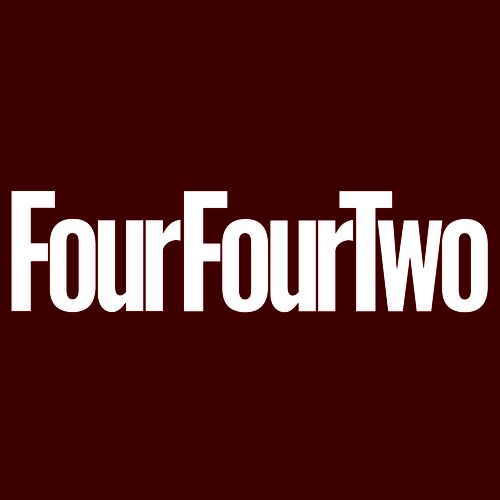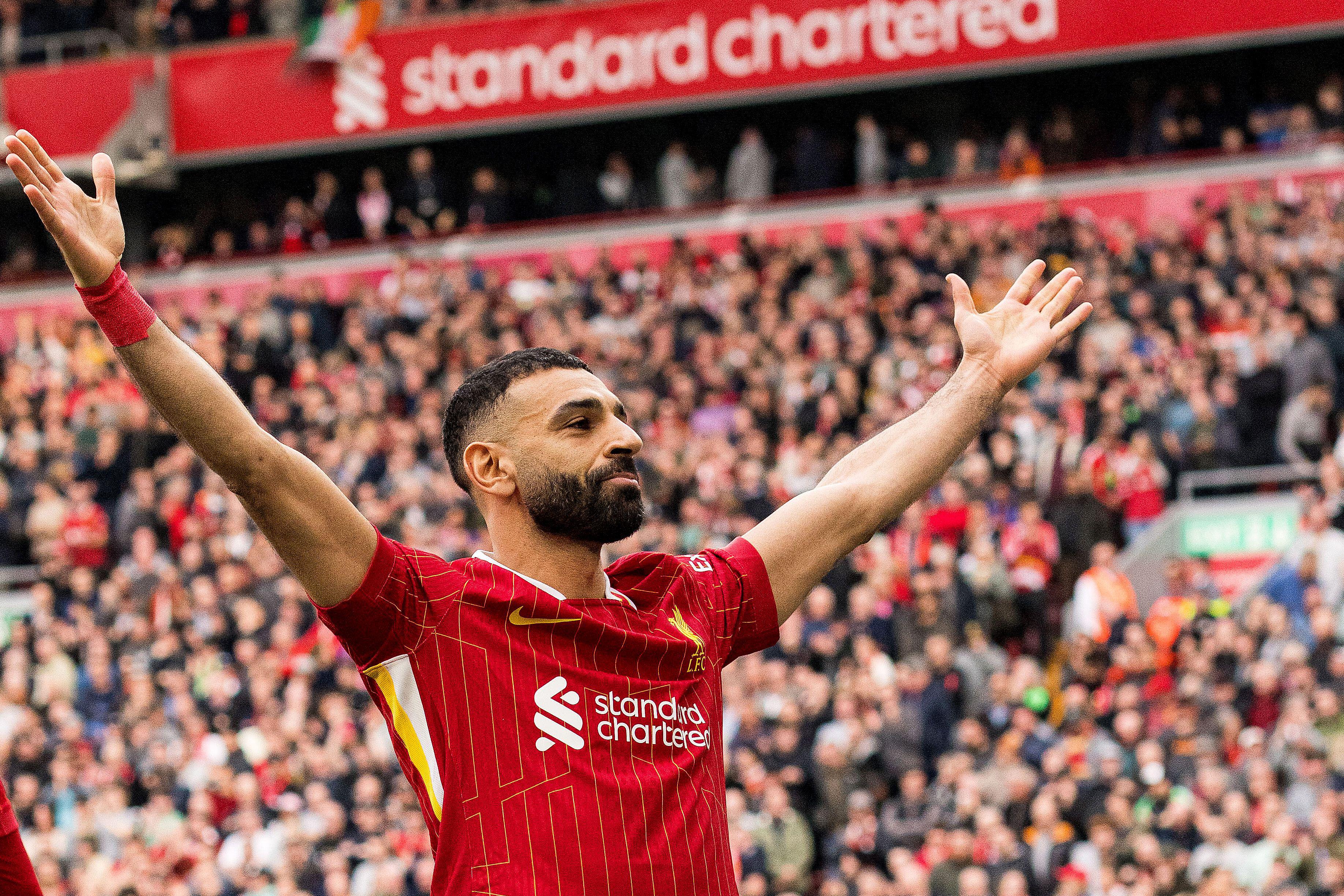RANKED! 55 shocking football transfers that shook the world
The seismic switches that changed the face of football - here's definitive list of the most shocking deals in the game
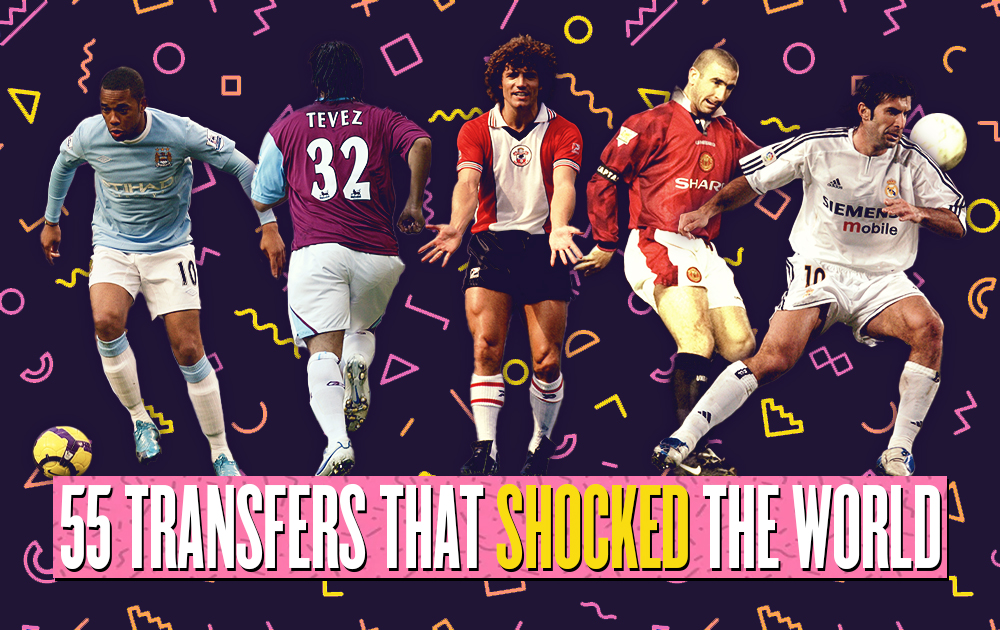
How many of our most shocking football transfers do you remember? And what was the real story behind the switch? Read on as we chart the deals that almost broke the game.
First, a couple of caveats: we've tried to include a fair range of transfers from every time period, and where some transfer fees were not disclosed, we've gone for the most often cited (if disclosed). We've also converted them to pounds sterling.
TRANSFERS 10 of the biggest sagas that need to be resolved this summer
As ever, tell us what we got right or wrong in the comments below, on Facebook, or on Twitter.
55-41
55. Ronaldinho (AC Milan to Flamengo, 2011)
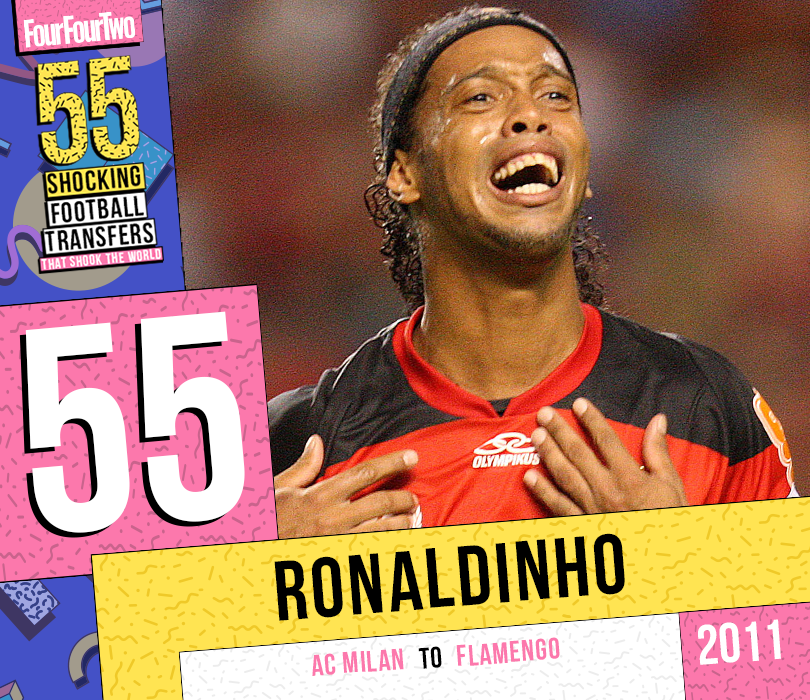
Fee: Undisclosed
It was 2011, and Ronaldinho Gaúcho was sick and tired of Massimiliano Allegri at Milan, so he asked his brother and agent Roberto de Assis to find a club in Brazil after 10 years far from home.
Palmeiras, Grêmio and Flamengo were all interested in the five-time world champion (as were Blackburn), and each had to face a soap opera-style saga that had most of its scenes set in a Rio de Janeiro steak house.
Get FourFourTwo Newsletter
The best features, fun and footballing quizzes, straight to your inbox every week.
Palmeiras had coach Big Phil talk to Assis and convince him of the deal, while Grêmio put speakers on the stadium’s pitch to celebrate with the fans after claiming to have had Ronaldinho's comeback confirmed. In the end, though, the Brazilian ace signed for Flamengo. Saga over.
Marcus Alves
54. Andrea Pirlo (Inter to Milan, 2001)
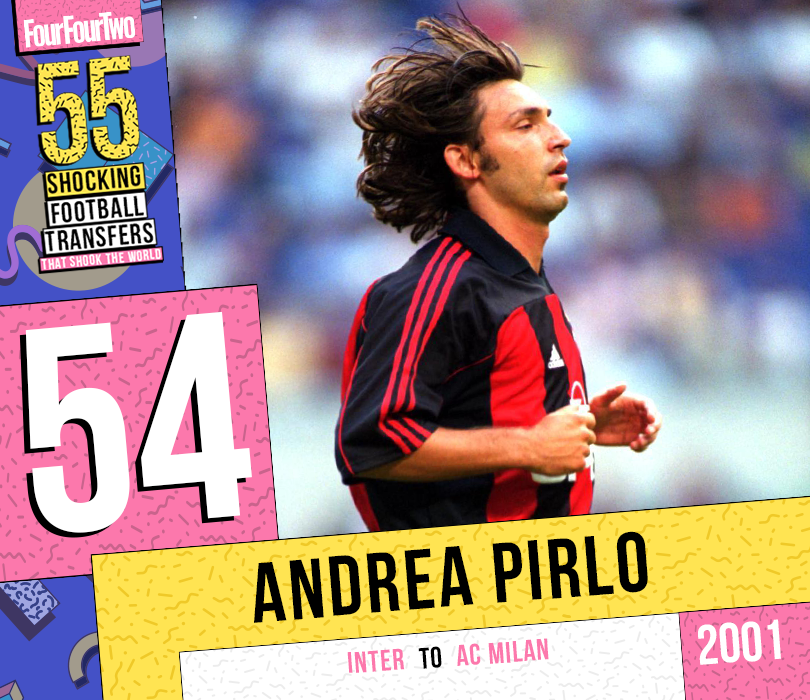
Fee: Part exchange
While it may now seem odd, Andrea Pirlo should actually have been an Inter legend. The Nerazzurri signed him from Brescia in 1998, back when he didn’t have a beard and played as a No.10. A brief loan spell back with his former club proved the making of him, however, with coach Carlo Mazzone being the first to deploy him as the deep-lying playmaker he became.
JAMES HORNCASTLE The coolest footballer ever? Why Andrea Pirlo remains a style icon
That caught the attention of Carlo Ancelotti and Milan, who somehow convinced Inter to part with Pirlo in exchange for €2.8m and average Argentine Andres Guglielminpietro. They would repeat the feat by taking Clarence Seedorf from their neighbours in a straight swap for Francesco Coco. Pirlo won two Scudetti and two Champions League titles before moving to Juventus for free in 2011 – another shockingly good value deal for the Italian schemer.
Adam Digby
53. Paul Pogba (Juventus to Man United, 2016)
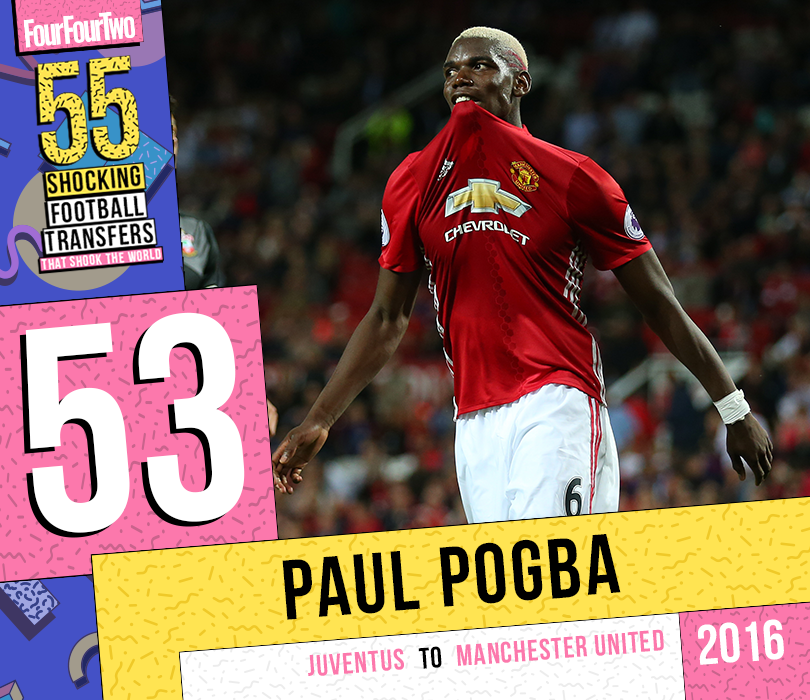
Fee: £89m
There always seems to be at least one long-running saga dominating during the summer transfer window. In 2016 it was the ‘Paul Pogba: will-he-won’t-he’ drama that resulted in Manchester United paying a world-record fee – £89m and then some in add-ons – for a player they let leave for free in 2012.
When he departed United for Juventus as a 19-year-old, Pogba told team-mate Rio Ferdinand it was to become the best player in the world. He needed playing time that he wasn’t guaranteed under Sir Alex Ferguson at Old Trafford, with Paul Scholes, Michael Carrick and even Anderson getting the nod ahead of him.
Fast-forward four years, with four Serie A titles, two Coppa Italia and two Supercoppa Italiana trophies to his name: #POGBACK is trending on Twitter, as the France international announces his shock return to the club he says is his home. HD
52. Carlos Gamarra (Palmeiras to Olimpia, 2007)
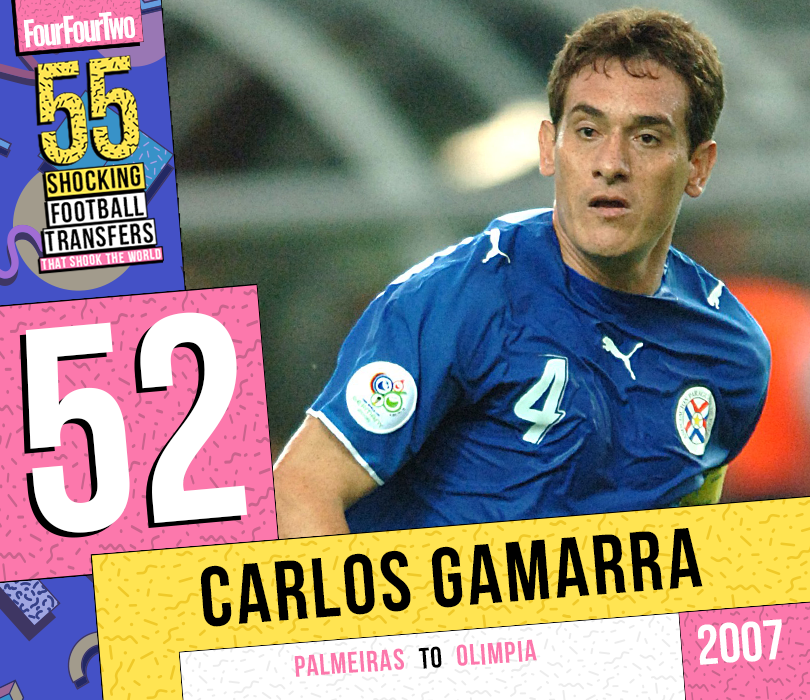
Fee: £1.7m
Carlos Gamarra didn't concede a single foul in the 1998 World Cup campaign that almost saw Paraguay beat hosts France. Much later on his career he could have had his pick of clubs after a fine career in Europe with the likes of Inter, Benfica and Atletico Madrid – but anyone but Olimpia.
Well, according to Cerro Porteño fans anyway – the club he'd began his career with in 1990, and where he became an idol after winning two Paraguayan titles. So when he returned home in 2007, it was expected that Gamarra would announce one final move to end his career at Cerro.
He'd probably wished he did. Instead, the stopper ended up signing for rivals Olimpia, and felt the supporters’ wrath so badly that they tried to set his house on fire.
Marcus Alves
51. Cafu (Zaragoza to Palmeiras, 1995)
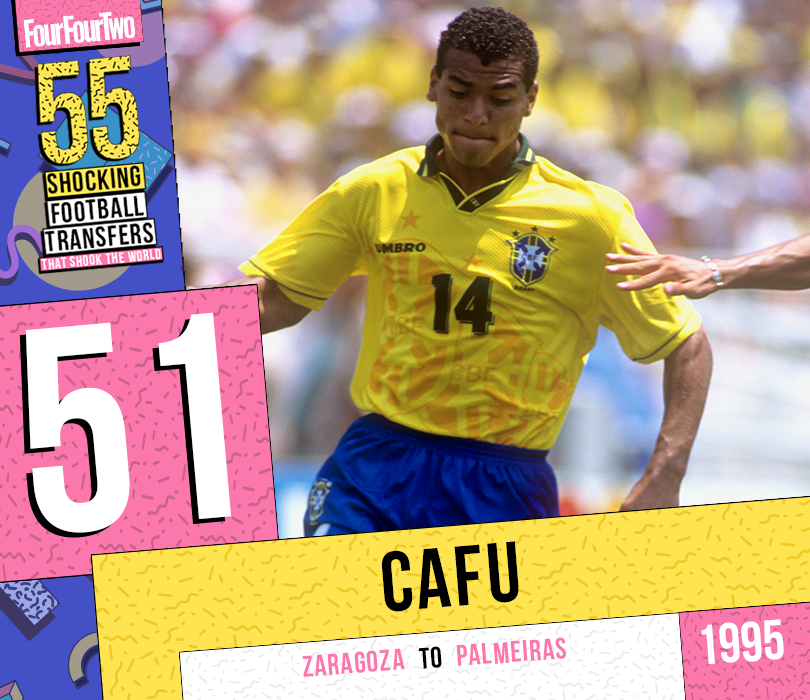
Fee: Undisclosed
São Paulo and Palmeiras’s training grounds are separated by a wall in the Barra Funda neighborhood. The rivals have never had a great relationship and, among others, you can blame former right-sided defender Cafu for it.
The two-time world champion won everything with São Paulo at the beginning of the '90s and was sold to Zaragoza in 1994, with a special clause saying that the Spanish side would have to pay the additional amount of US$3.6 million if they sold Cafu to Palmeiras before 1996.
YOU ASK THE QUESTIONS: CAFU "It's true that Milan were celebrating at half-time against Liverpool in Istanbul"
Back then, Palmeiras had milk company Parmalat as a heavyweight sponsor and somehow found a way to sign Cafu by using a smaller team, Juventude, who were also partners of the nine-time Brazilain champions. The right-back spent only a month at the satellite team, and is still hated by São Paulo’s fans.
Marcus Alves
50. Colin Kazim-Richards (Fenerbahce to Galatasaray, 2011)
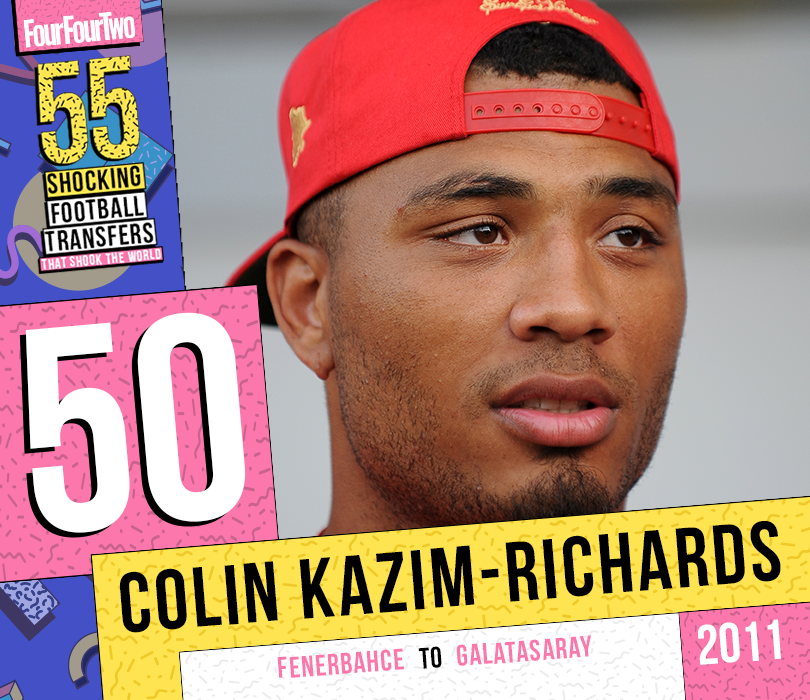
Fee: Free
"I’m from east London, E17. Where I grew up you’d got a problem going to E11 – it was life-threatening," Colin Kazim-Richards declared to FourFourTwo in November. "So moving clubs… no one was going to kill me. That’s what I was thinking at the time."
Nobody needs reminding of the vitriol between Fenerbahce and Galatasary supporters, but it didn't faze daring globetrotter Kazim-Richards, who crossed the scorched divide on a free transfer in January 2011. The ex-Bury forward had spent three-and-half productive years with the Yellow Canaries, with whom he made his Champions League debut and won the majority of his Turkey caps, but soon became a victim of the country's madcap press and eventually had his contract terminated.
Two days later he'd skipped across the Bosphorus. "I’d have been stupid not to go," Kazim-Richards told FFT. "I wanted to work with Gheorghe Hagi, an all-time great footballer. Tugay (ex-Blackburn) called me and said, ‘Listen, are you up for it? I know it’ll be hard moving here from there’. It took me two seconds. I said, ‘Yeah, let’s do it’."
He didn't take too long to endear himself to a sceptical new set of fans, though – on debut he netted the last-ever goal at Ali Sami Yen Stadium, then bagged the first goal in the first-ever derby at Türk Telekom Arena against Fenerbahce.
Joe Brewin
49. Roy Keane (Nottingham Forest to Man United, 1993)
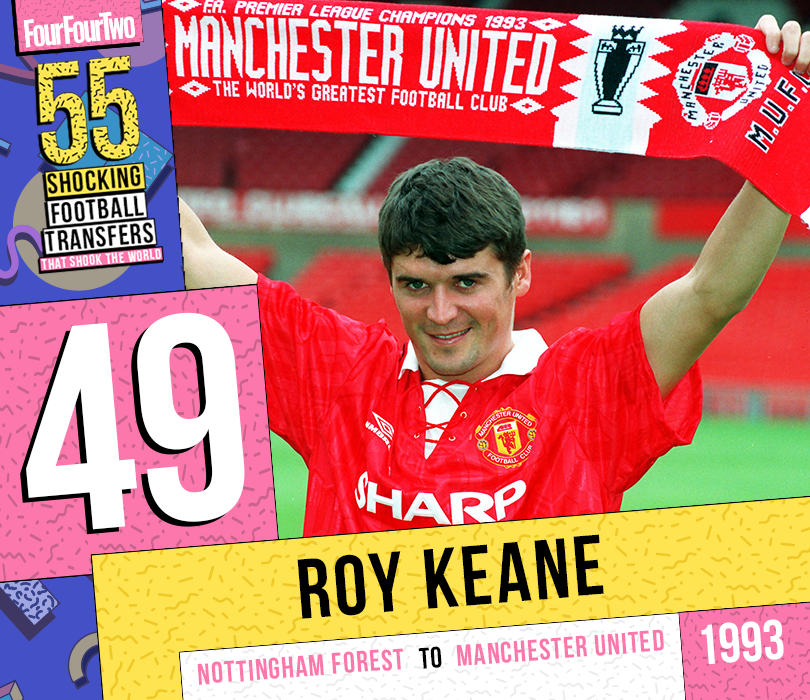
Fee: £3.75m
One Friday in June 1993, Kenny Dalglish went into the weekend thinking he had his man. The Blackburn Rovers manager had just shaken hands on personal terms with Roy Keane for a British record £4m transfer from relegated Nottingham Forest, but the Ewood Park office had already closed. No harm done, thought Dalglish – the paperwork would be finalised first thing Monday morning. Over the weekend, Keane’s phone rang.
“Roy, it’s Alex Ferguson. Have you signed any forms?” asked the Manchester United manager. Keane confirmed he hadn’t. “Why don’t you come to Manchester and have a chat with me before you do anything?”
Over a game of snooker, Ferguson convinced Keane to reject Dalglish in favour of Old Trafford. “Nobody does this to Kenny Dalglish,” third-personned the Rovers boss when Keane informed him of his change of heart. “You’re a wee bastard and you won’t get away with this.”
Seven Premier League titles later, he probably did.
Andy Murray
48. Paul Gascoigne (Newcastle to Tottenham, 1988)
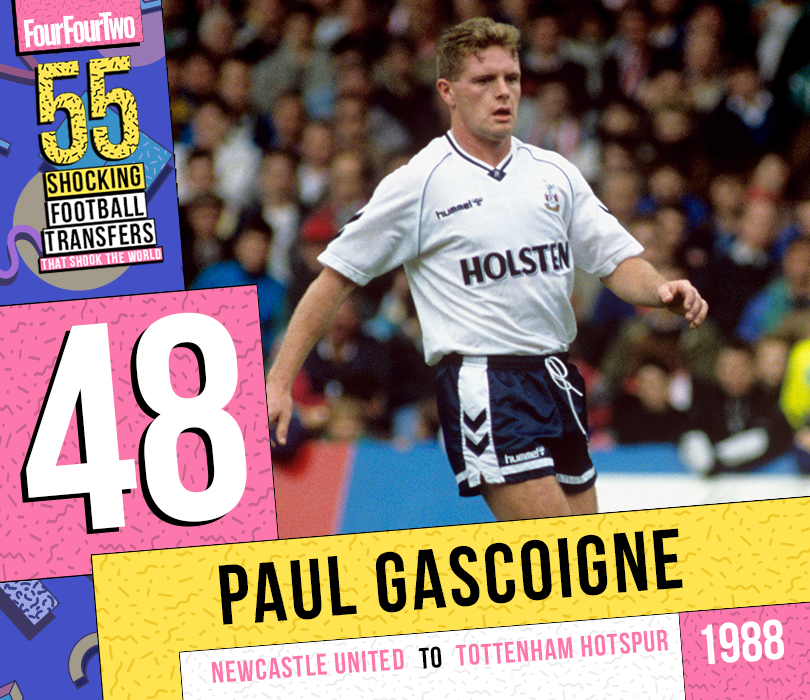
Fee: £2.2m
After receiving a verbal assurance from Newcastle’s Paul Gascoigne in July 1988 that he’d be joining Manchester United imminently, the Red Devils boss disappeared to enjoy a relaxing holiday, only to discover shortly after arriving that Gazza had instead joined Tottenham for a British record £2.2 million fee (a scenario to be later reversed with Keane).
The reason? The north London club had offered his parents a house and a car, and his sister a sunbed. Despite winning the FA Cup in N17, Gazza later admitted that perhaps his career would have taken a different trajectory at Old Trafford. Fergie’s holiday was ruined, but at least Gazza’s sister got a nice suntan.
THE GAZZA FFT ISSUE Order FourFourTwo's July issue, starring Paul Gascoigne's 50 greatest stories
The United boss, meanwhile, later remarked about what might have happened had Gazza come under his stewardship, telling the Telegraph: "Alan Shearer is one [player] I wish I'd signed, but for me the most disappointing of all was Paul Gascoigne. I think it was a bad mistake, and Paul admits it. We had Bryan Robson, a Geordie; Steve Bruce, a Geordie; Gary Pallister, from Middlesbrough... we had a structure of players who could have helped him and it could have given him some discipline."
Jon Spurling
47. Gareth Bale (Tottenham to Real Madrid, 2013)
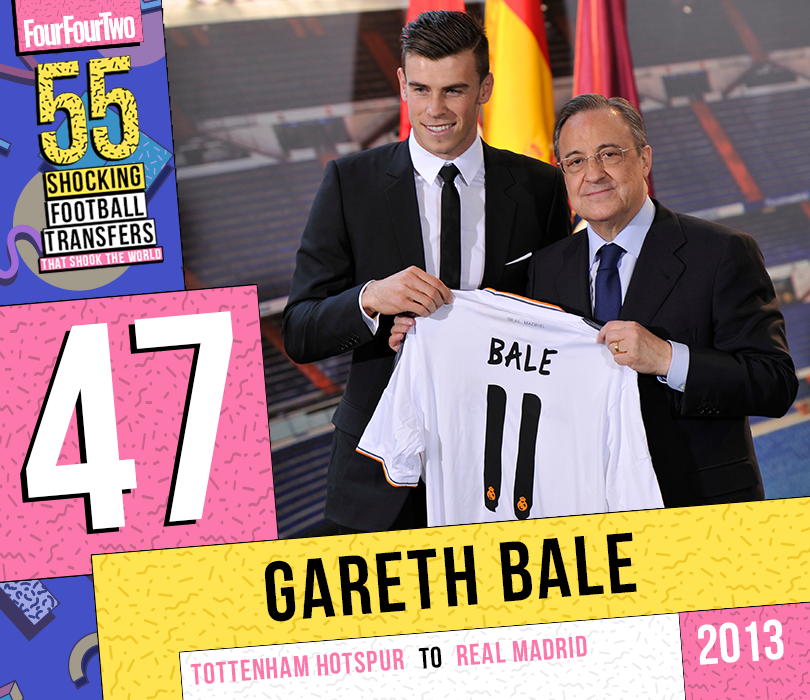
Fee: £86m
With Gareth Bale smashing in 21 league goals during the 2012/13 season, including stunning solo efforts against Norwich and West Ham, the press were full of speculation about a move to Europe in the summer transfer window.
The strapping Welshman won the PFA Player's Player of the Year award for the season, plus the Young Player of the Year gong and, shortly after, the Football Writer's Award too. The obstinate Daniel Levy had everything he needed to exact the full value from Tottenham's most sellable asset, with Champions League qualification eluding the Lilywhites. Rumours of a move to Real Madrid began to grow across the summer months, with talk of a world-record fee in the offing.
INTERNATIONAL Will Gareth Bale play for Wales again?
When Spurs then lavished some £105 million on the likes of Vlad Chiriches, Nacer Chadli and others, the game was up: this splurge needed balancing and a £86m fee would tidy up the balance sheet nicely. Levy and Florentino Perez squabbled over clauses and sell-on fees, but eventually Carlo Ancelotti got his man and Cristiano Ronaldo had been replaced as the most expensive player in the world.
Unless you lived in Madrid that is, where – with the fee undisclosed – it was played down to keep the Portuguese superstar's ego suitably soothed.
Gregor MacGregor
46. Alan Shearer (Blackburn to Newcastle, 1996)
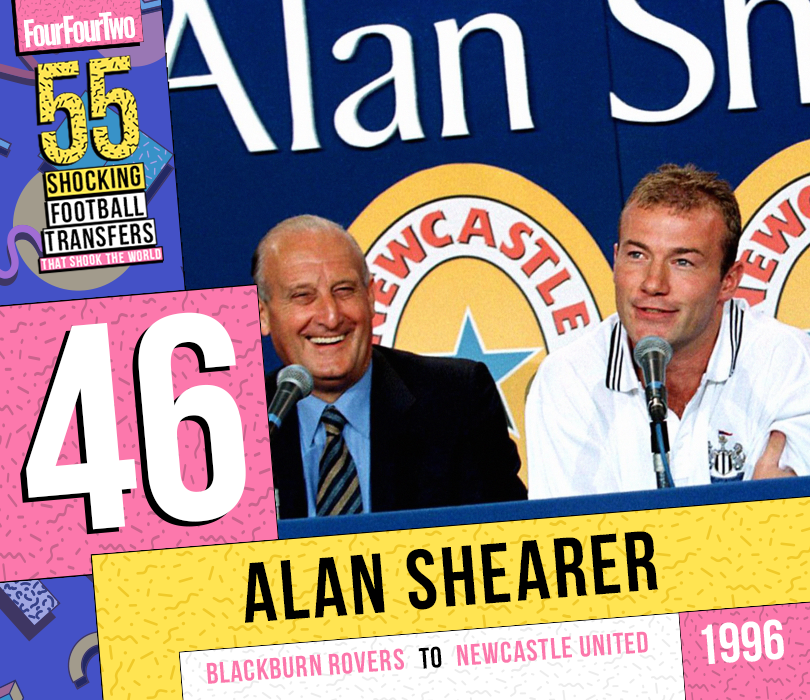
Fee: £15m
That Shearer left Blackburn, a year after helping them to the Premier League title and weeks after starring at Euro 96, wasn't totally unexpected. But it was the sheer scale of the transfer that made headlines – a world record £15m fee, with 15,000 Newcastle fans turning up at St James' Park just to greet him.
Blackburn's attempts to persuade him to stay included Jack Walker surprisingly offering him the manager's job at Ewood Park aged 25, but Shearer politely declined that offer and the interest of reigning champions Manchester United to join his boyhood club.
Newcastle were hesitating on the fee until their Magpies-supporting bank manager stepped in and offered to find a way of funding the deal, such was his desire to see Shearer play for the Toon.
Chris Flanagan
45. Andy Carroll (Newcastle to Liverpool, 2011)
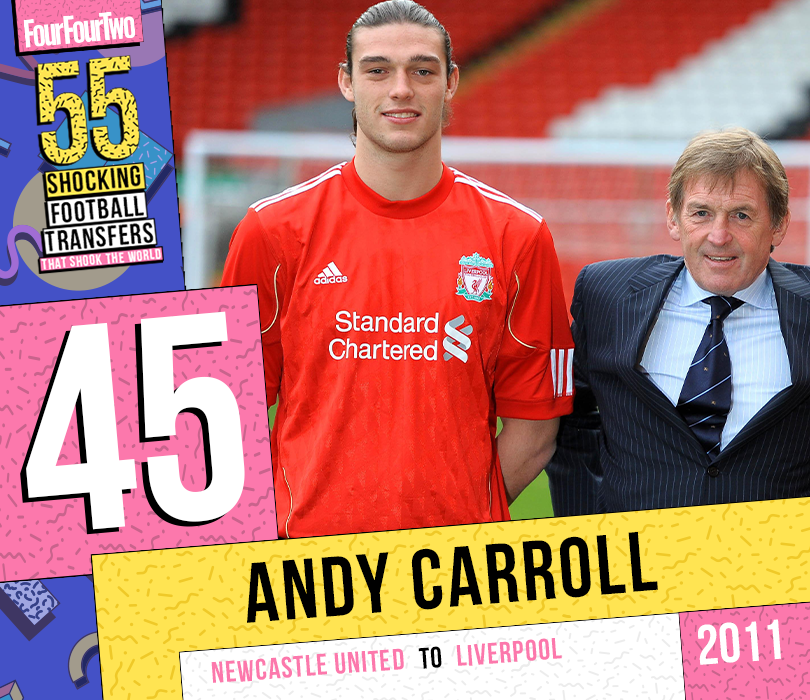
Fee: £35m
"It is about control. We had the control. We knew the Torres deal was there. We drew that f***ing deal, perhaps the ultimate. So £30m? F*** off! Don’t waste my time. I slammed the phone down. £35m? Everybody including Pardew (then Newcastle manager) all agreed.
"But the £35m they wanted to pay over four years. It was rubbish. Mike (Ashley) said – and he is a brave boy, Mike, I promise you – get all the £35m up front."
That was Derek Llambias's version of events on January 31, 2011. He had a habit of a making himself the hero of most anecdotes, so it should perhaps be treated with scepticism. Still, Carroll did move for £35m and what happened next was a relative disaster: a succession of injuries, a critical change in management and style, and a Liverpool career which comprised just 11 goals.
As you suspect will likely be the case upon his retirement from football, this was very much a case of what might have been.
Seb Stafford-Bloor
44. Johan Cruyff (Ajax to Barcelona, 1973)
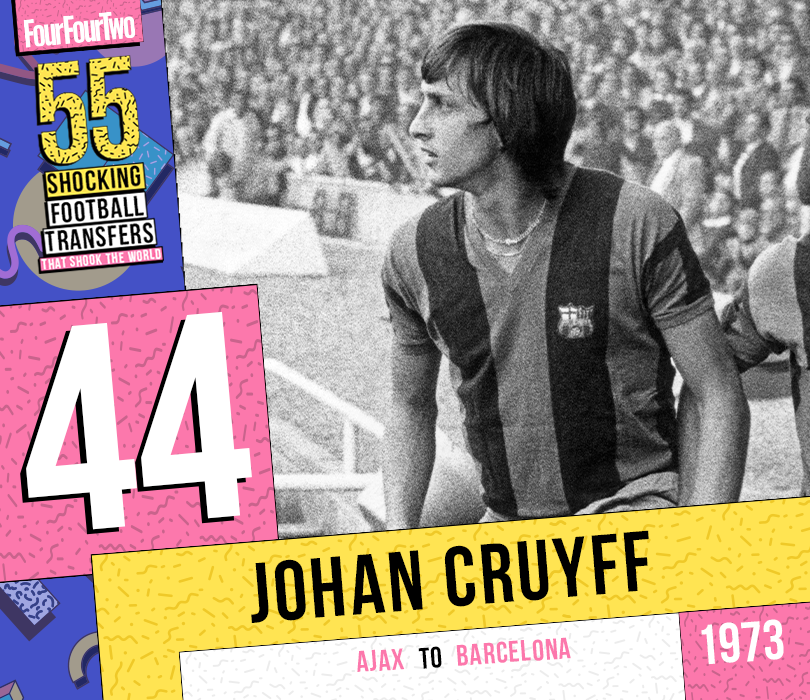
Fee: £922,000
“Get me out of here,” Johan Cruyff instructed his father-in-law and representative Cor Coster after losing out on the Ajax captaincy in summer 1973. Events moved rapidly, and for a hefty 60 million peseta fee, Cruyff headed to Barcelona after rejecting a move to Real Madrid because it was a “fascist club”.
ANDREW MURRAY How Johan Cruyff reinvented modern football at Barcelona
The whole transfer was highly political, with the Dutch Football Federation threatening to block the deal, and Cruyff vowing to boycott the 1974 World Cup if the Federation didn’t sanction the move. Grudgingly they did, and Cruyff quickly became a Catalan icon.
Jon Spurling
43. Jaap Stam (Man United to Lazio, 2001)
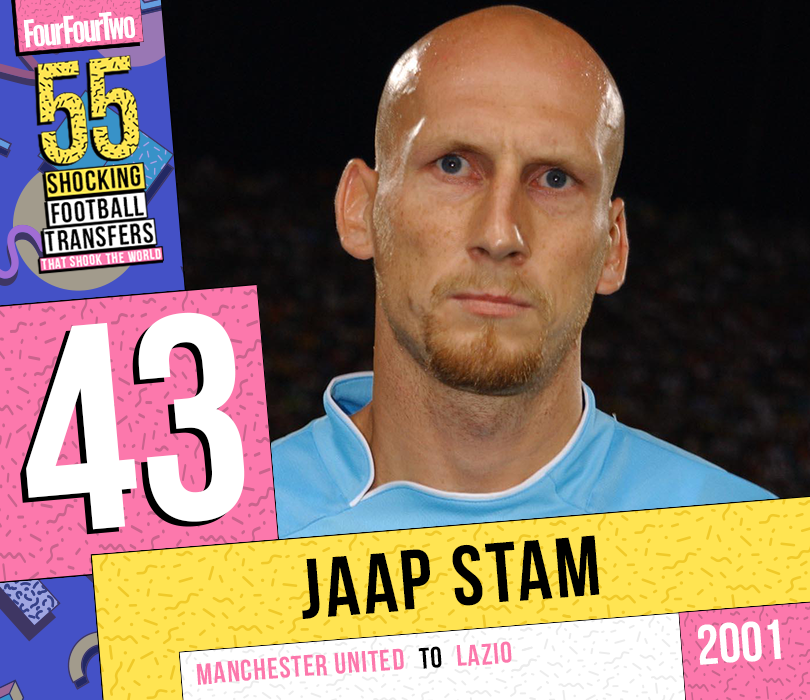
Fee: £15.3m
It’s safe to say Sir Alex Ferguson got most things right during his trophy-laden 26 years as Manchester United manager, but the Scot has frequently expressed regret at his decision to sanction Stam’s departure in 2001. Ferguson always insisted that the sale of the centre-back had nothing to do with critical comments made in his autobiography, but it’s hard to see how the deal made any sense from a purely footballing point of view.
One theory purported (by journalist Simon Kuper among others) was that the Dutchman became an early victim to poorly applied data analysis in football – in particular, that Stam was discarded because he was making fewer tackles towards the end of his Manchester United career. It was later, in fact, found instead to be because the defender was reading the game better than ever and positioning himself to intercept the ball more rather than have to make a one-on-one challenge.
No wonder that Stam went on to excel in Serie A, first with Lazio and then Milan, before retiring after a single season at Ajax in 2006/07.
Greg Lea
42. Juninho Paulista (Sao Paulo to Middlesbrough, 1995)
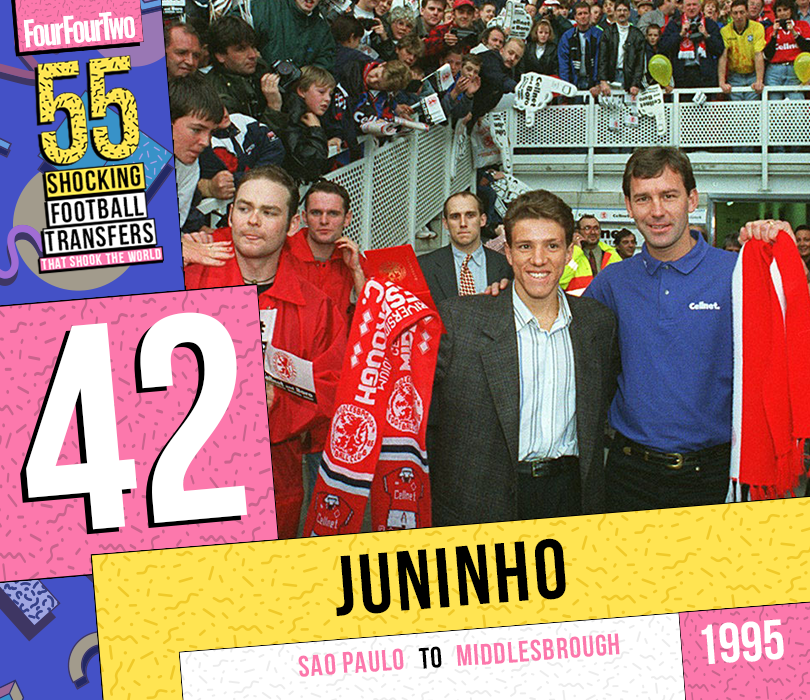
Fee: £4.75m
The brilliant diminutive Brazilian playmaker switched to Boro back in the mid-'90s, becoming the most successful signing of Bryan Robson's newly promoted Riverside outfit.
Tracked by several top European clubs, the Sao Paulo attacking midfielder had just made his breakthrough with the Brazil senior team that February and already won the Copa Libertadores and Intercontinental Cup by the time he moved to England. Then only 22, he immediately set pulses racing with his magnetic ball control and surges forward from midfield.
Two seasons of top-flight English football culminated in two losing finals (League and FA Cup), relegation and a subsequent move to Atletico Madrid for £13m at a healthy profit. However, the cult hero returned twice more to the north-east, on loan to help the promoted Boro in 1999 before joining up with the Teesiders again in 2002, helping them to win the League Cup in 2004.
Gregor MacGregor
41. Andreas Moller (Borussia Dortmund to Schalke, 2000)
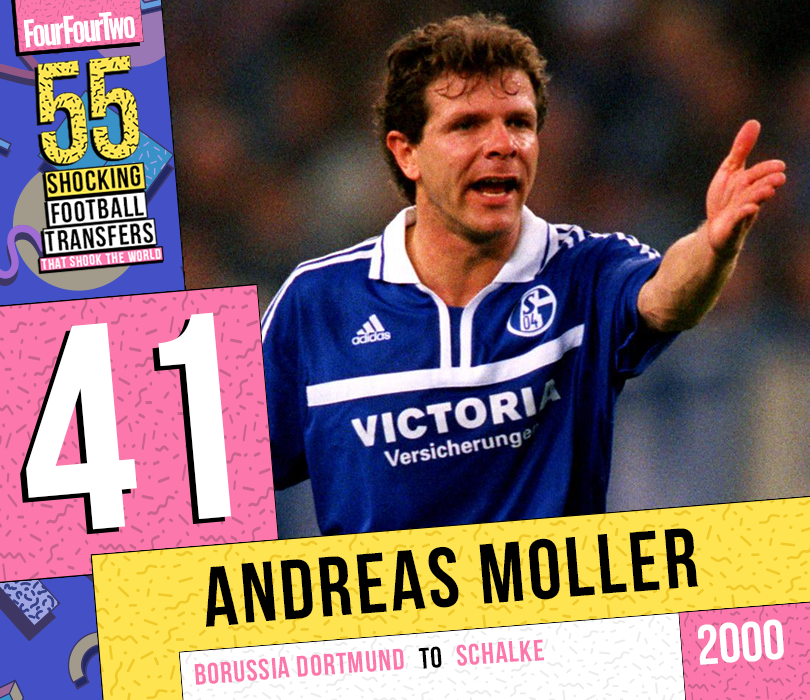
Fee: Free
Not only did this transfer upset Borussia Dortmund fans, it also aggravated Schalke's too. Moller had already irritated Dortmund supporters by leaving for Eintracht Frankfurt in 1990, only to return for a second spell in which he re-established himself as a hero and helped BVB to Champions League glory in 1997.
Three years later he was off again: this time to Dortmund's fierce local rivals Schalke following the expiry of his contract. Dortmund fans were livid, and Schalke's didn't exactly welcome the arrival of a man they'd previously grown to hate. Awkward...
Chris Flanagan
40-31
40. David Luiz (PSG to Chelsea, 2016)
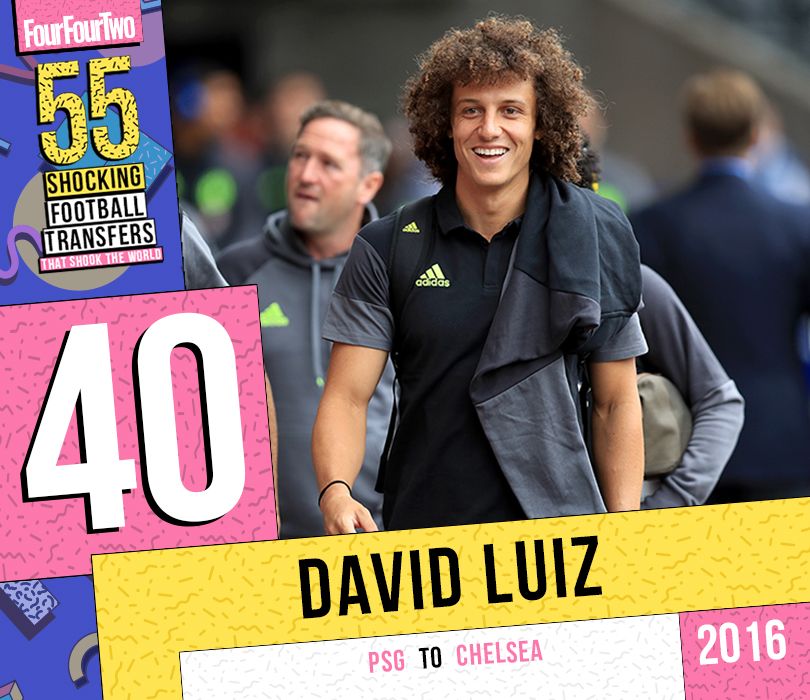
Fee: £34m
Having chased Alessio Romagnoli and Kalidou Koulibaly for large amounts of the summer, Blues fans were somewhat baffled by Antonio Conte's decision to bring David Luiz back to west London.
Here was a player routinely mocked for his bizarre defending style, with many onlookers believing that Chelsea always looked better defensively the further away that the Brazilian was from his own box. A speedy £34 million deal was rubber-stamped on deadline day, though, in a move that screamed ‘fall-back option’.
ALEX HESS David Luiz, the constant enigma – how the mercurial defensive talent defines Unai Emery's Arsenal
But so far, Luiz was nothing short of a revelation. Playing at the heart of Conte’s brilliant back three, the 29-year-old was showered with praise, having played a huge role in Chelsea's stroll to the Premier League title, before winning the Europa League at the hands of his next club, Arsenal, two years later. Luiz claimed that he came back to Stamford Bridge with one target – winning the title – so job done on that front.
Ben Clarke
39. Bebe (Vitoria to Man United, 2010)
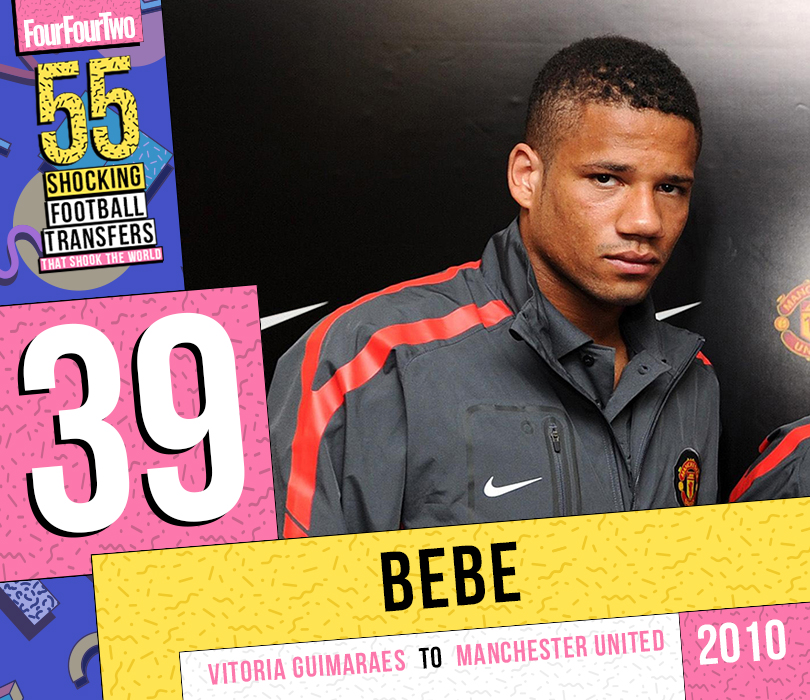
Fee: £7.4m
The player who Alex Ferguson famously signed having never seen him play. Bebe’s employment at Old Trafford was sealed by a startling fee of over £7m, just 12 months after he was being touted around Europe for £125,000. It ended, four years and two Premier League appearances later, as one of the most ignominious and inexplicable transfers of the modern era.
United bought Bebe from Vitória at a time when he had only played six pre-season friendlies for the Portuguese club, having just signed for them. Bebe had also tied himself to a new agent by the name of Jorge Mendes days before United made their move. Before that, the striker’s only competitive football had been a single season in the Portuguese third division, during which he scored four goals in 26 games.
Ferguson claimed that the striker had come recommended by his assistant Carlos Queiroz (also represented by Mendes who, according to Vitoria’s directors, landed 30% of the transfer fee as part of the deal). The transfer was subject to an investigation by Portuguese anti-corruption police in 2012, though no party was ever charged with wrongdoing.
Alex Hess
38. Mario Gotze (Borussia Dortmund to Bayern Munich, 2013)
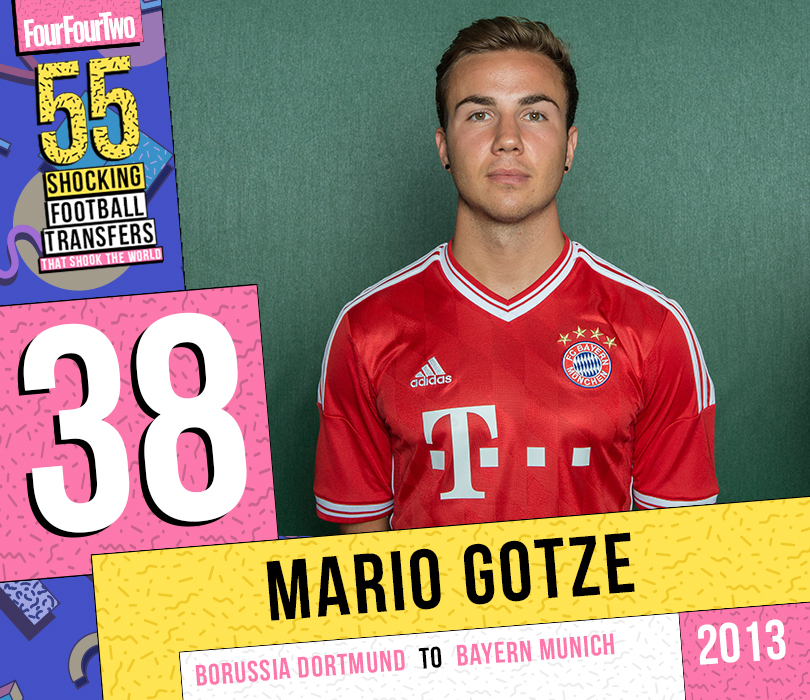
Fee: £32m
Robert Lewandowski and Mats Hummels have both swapped Borussia Dortmund for Bayern Munich in recent years, but Gotze’s move from the former to the latter was easily the most seismic.
Despite being born in Bavaria, the future World Cup winner joined BVB at the age of eight and went on to play a starring role in their Bundesliga triumphs in 2011 and 2012.
In April 2013, though, it was confirmed that Gotze was Bayern-bound after die Roten triggered his release clause. Dortmund fans didn’t take the news particularly well, while the attacking midfielder – now back at Signal Iduna Park – struggled to nail down a regular first-team spot under Pep Guardiola.
Greg Lea
37. Gigi Buffon (Parma to Juventus, 2001)
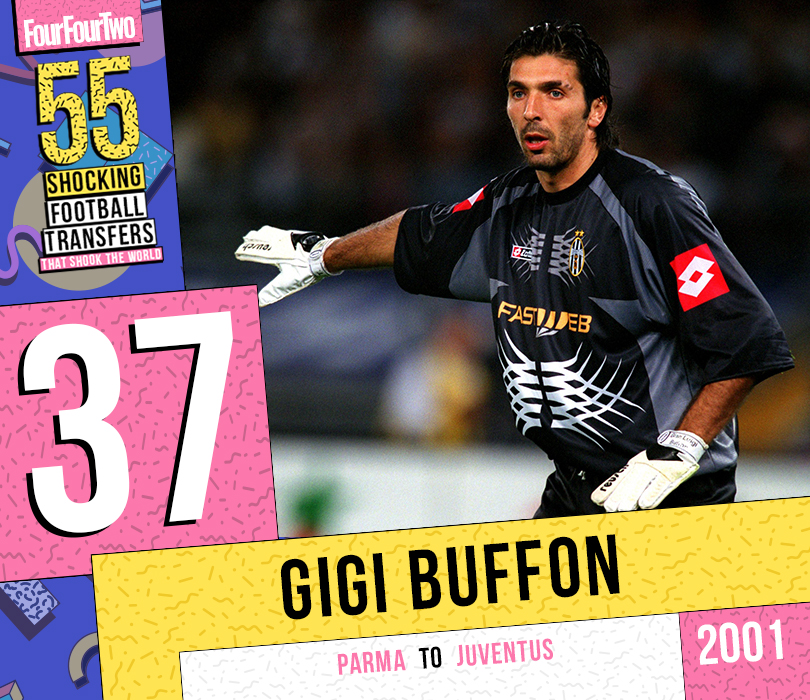
Fee: £32m
While many of these deals saw one side steal a great player from one of their rivals, Gigi Buffon’s move from Parma to Juventus is one that truly benefited both teams. The Stadio Tardini outfit were struggling financially, but collected a cool €53 million fee that remains a world record for a goalkeeper even today.
Juventus didn't do badly out of the deal, however, signing a 23-year-old who became arguably the finest player ever to stand between the posts.
Nine Serie A triumphs (two of which were revoked) and a Serie B title in 15 seasons has proved a fine return, while he also played a major role in helping the Bianconeri reach two Champions League finals.
Adam Digby
36. Julien Faubert (West Ham to Real Madrid, 2009)
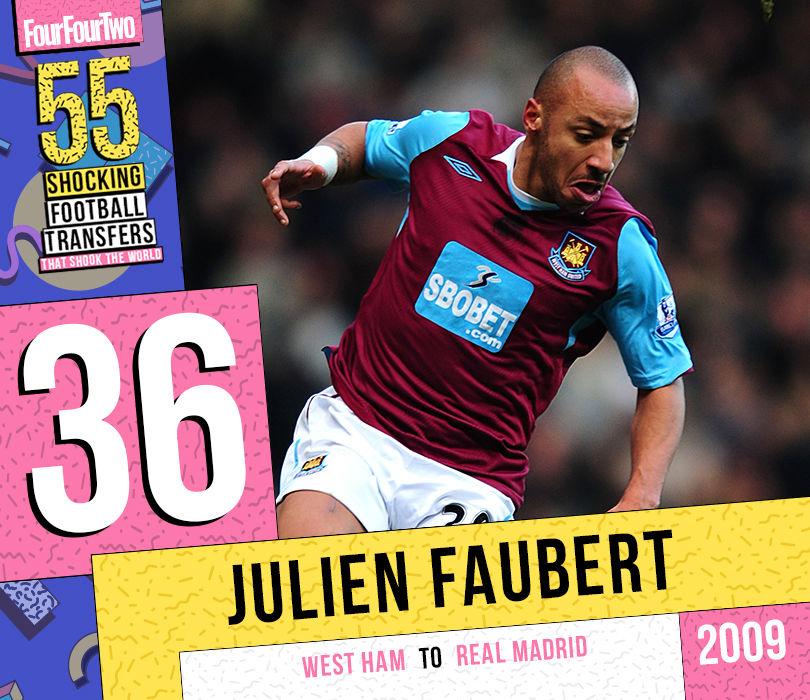
Fee: Loan
The Soccer Saturday panel were running through the half-time scores when the news broke. “Julien Faubert has joined Real Madrid,” Jeff Stelling declared, stunning his colleagues into silence. “Who’s his agent?” a flabbergasted Paul Merson enquired. “He should be knighted by the queen.”
It’s hard to disagree. Faubert, who’d hardly set the world alight after joining West Ham 18 months previously, played just 52 league minutes during his loan spell at the Bernabeu.
INTERVIEW Julien Faubert: I didn’t fall asleep at Madrid – I just closed my eyes because I was bored
His most memorable contribution came when he appeared to fall asleep on the bench during a game against Villarreal, although he later informed FFT that he had merely “closed [my] eyes because I was bored”. Fair enough.
Greg Lea
35. Ruud Gullit (Sampdoria to Chelsea, 1995)
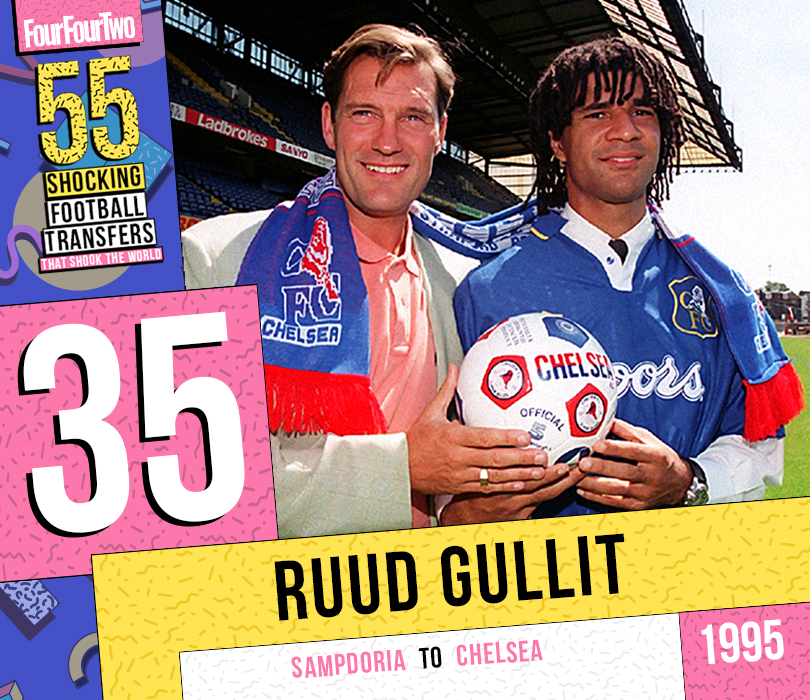
Fee: Free
A free transfer in the loosest sense: Gullit's move from Sampdoria was indicative of both the Premier League's swelling pockets and its intention to be noticed by the rest of the world. By 1995, the Serie A consensus appeared to be that chronic knee problems had dulled the former World Footballer of the Year, and that he was subsequently no longer worth the financial bother.
Glenn Hoddle disagreed, though, giving Gullit a new home on the King's Road and a leg-saving role at sweeper.
He spent just three years in London – his playing career curtailed by time, his start to managerial life interrupted by Ken Bates – but Gullit's Chelsea legacy is framed by what he enabled: he represents the beginning of the club's ascension towards its contemporary personality.
Seb Stafford-Bloor
34. Ashley Cole (Arsenal to Chelsea, 2006)

Fee: £5m (part exchange)
For the sake of appeasing any lawyers who may be reading, let's just say that Chelsea 'admired' Ashley Cole while he was still an Arsenal player. Photographs were taken, back pages throbbed with scandal, and in 2005 Cole was fined by the Premier League for engaging in illegal contact with representatives from Stamford Bridge.
By August 2006, one of the most protracted sagas in transfer history was concluded: Cole joined Chelsea for £5m, with William Gallas moving in the opposite direction.
It was the death of Ashley the Footballer and the birth of ‘Cashley’, a personification of everything that was wrong with the modern game – a moniker which, even a decade on and with his career all but over, he is yet to shake. Bad advice, bad decisions, bad autobiographies.
Seb Stafford-Bloor
33. Steve Daley (Wolves to Man City, 1979)
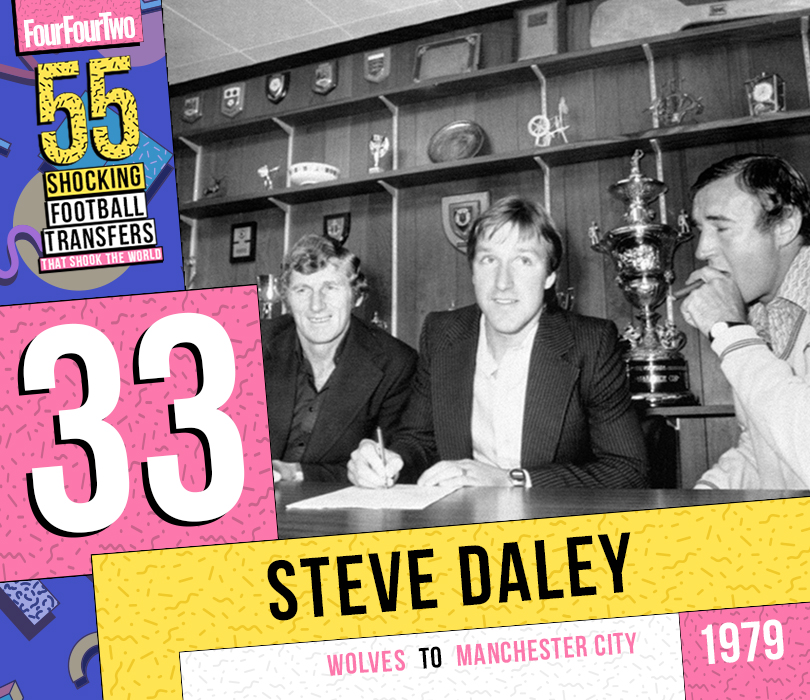
Fee: £1.4m
Manchester City manager Malcolm Allison claimed he’d offered a tidy £400,000 to Wolves for dogged midfielder Steve Daley in September 1979, only for City chairman Peter Swales to add a cool £1 million to the fee, and nab him for £1.4m.
Swales may have denied Big Mal’s claim but the move never worked out, with Daley – a neat and tidy player – failing to live up to hype. The Observer described his arrival at Maine Road as “the latest plutocratic passenger on the City gravy train”.
Daley departed after two years, with City struggling financially and his own reputation in tatters. The nadir came at Brighton, when Daley was sent off with 15 minutes remaining and City contrived to throw away their lead.
“The referee came to me after the game and said he felt bad for sending me off,” he later recalled to FFT. “He had seen the look of dejection on my face. He added that the best thing I could do was go and play in the North American Soccer League, and that’s what I did.”
Jon Spurling
32. Alan Smith (Leeds to Man United, 2004)
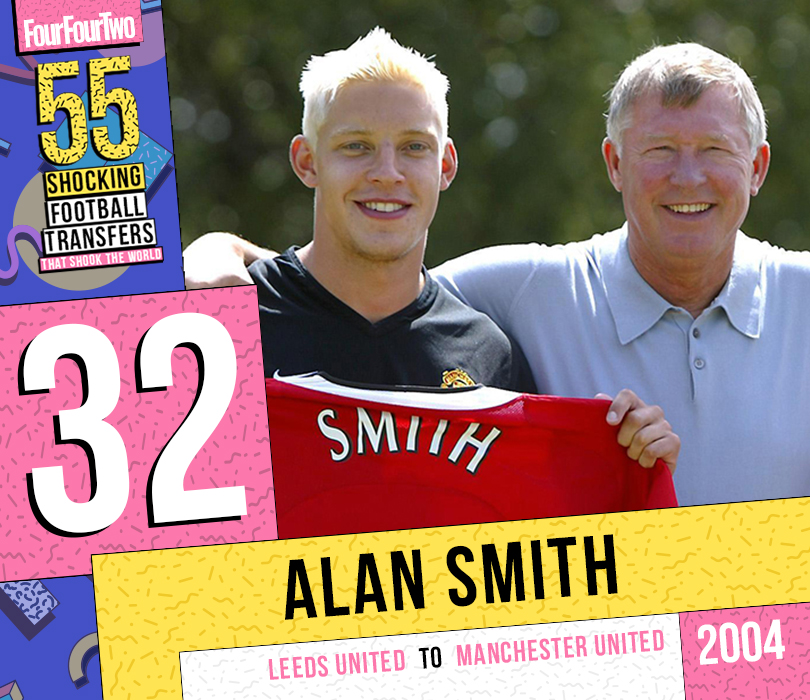
Fee: £7m
He could hardly have been clearer. “Man United,” Smith replied, when asked in a Sky Sports interview whether there was a team he would never play for.
At that point, the boyhood Leeds fan was living the dream by representing his hometown club in the Premier League, but relegation and the threat of administration brought about his departure in 2004. United, who bid £7m for the striker’s services, would be his next employers.
“I was young and naive [when I made that comment] and never thought that a) Man United would ever want me, and b) Leeds would sell me,” Smith reflected in a 2015 One-on-One with FFT. “Look how silly I was.”
Greg Lea
31. Esteban Cambiasso (Inter to Leicester, 2014)
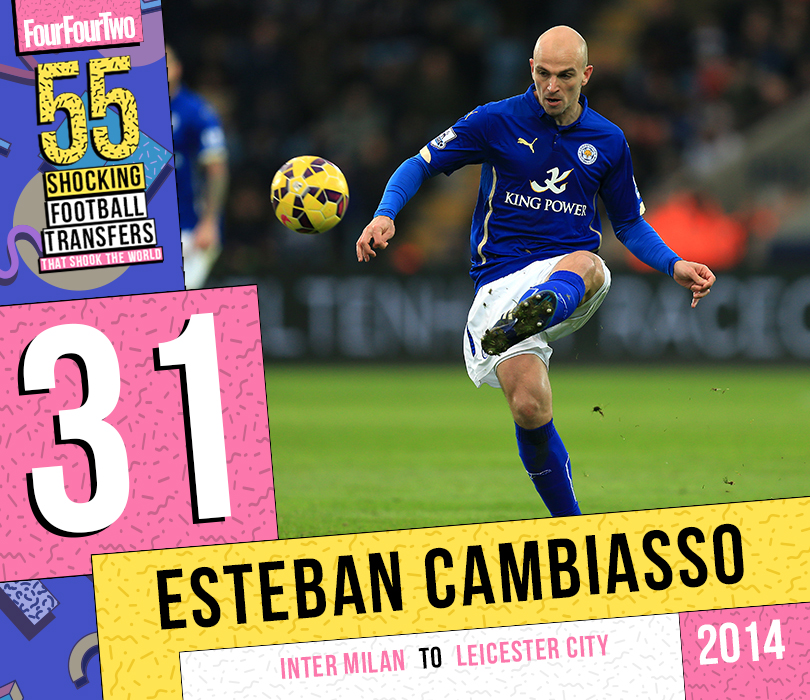
Fee: Free
After a decade at Inter, Cambiasso fancied a new challenge – and boy did he get one in the East Midlands. In one of the oddest and most intriguing signings the Premier League has ever seen, the 52-time Argentina international – and 2010 Champions League winner – spurned advances from elsewhere to join Nigel Pearson’s newly promoted Leicester.
“I know the coach and the club had an idea for me,” said the then-34-year-old, whose preferred No.19 shirt was left open by the Foxes in the hope they’d land their man. “The first option was Cambiasso, the second option was Cambiasso, and when I knew this I called my brother/agent and I said, ‘we go there’.”
JOE BREWIN The curious life of a Leicester City fan: just one more weird step along the world we go
For a little while he may have been regretting it. Despite scoring in the Foxes’ exhilarating 5-3 win over Manchester United in September, a dreadful run of just two wins from their next 25 league games left Pearson’s side almost resigned to relegation, seven points from safety.
But then that fightback: seven wins from their last nine games to complete a miraculous escape, with Cambiasso’s experience driving the Foxes through it. Leicester wanted him to stay for another year; instead, he chose a return to the Champions League with Olympiakos. Turns out they were quite all right without him.
Joe Brewin
30-21
30. Gabriel Batistuta (River Plate to Boca Juniors, 1990)
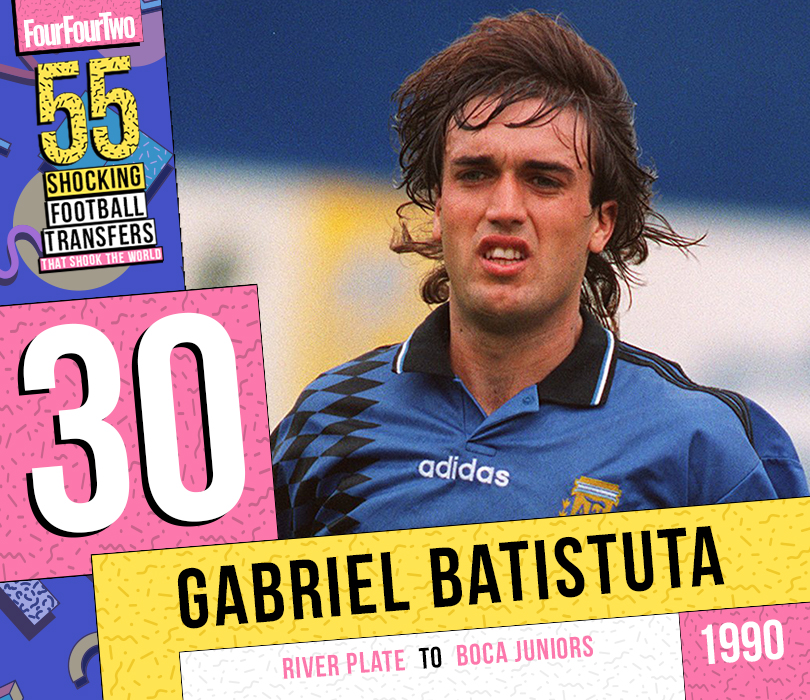
In 2002 World Cup qualifying, Argentina beat Uruguay 2-1 in Buenos Aires. Gabriel Batistuta celebrated the result by running in Daniel Passarella’s direction and telling his compatriot and rival coach: “This is for you”.
Behind it was the revenge he’d been seeking since the day Passarella threw him out of River Plate’s squad in 1990 because he felt the striker needed a team to play for him (and didn’t like that he was growing his hair).
In return, ‘Batigol’ shocked everyone by moving from River to Boca Juniors – and duly became an idol at La Bombonera. Passarella has never forgiven himself for accepting the transfer.
Marcus Alves
29. Jurgen Klinsmann (Monaco to Tottenham, 1994)
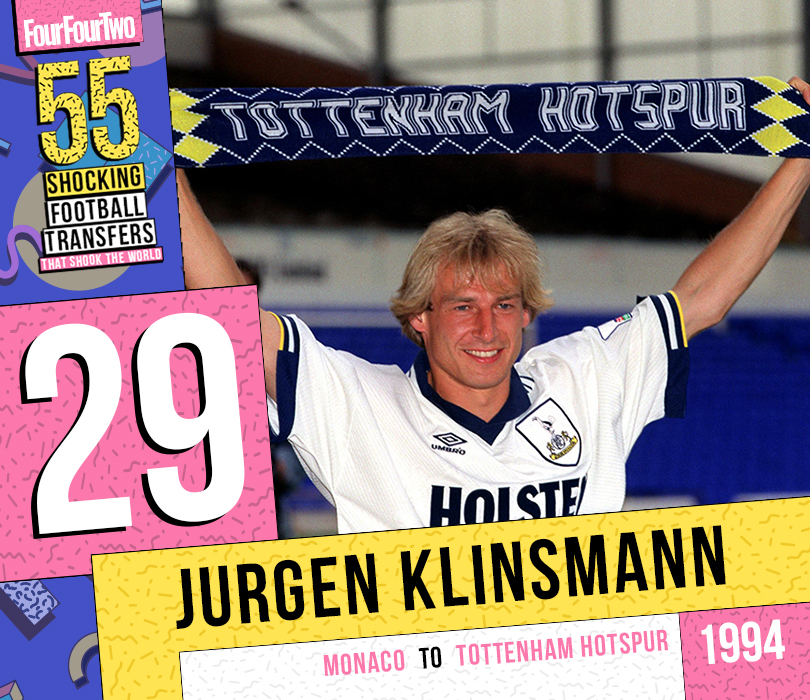
A transfer which emerged from an unlikely series of events: Tottenham's initial intention was to sign Diego Maradona, but instead Alan Sugar ended up entertaining Jurgen Klinsmann over cappuccinos on his yacht, and the German agreed to leave Monaco for a country where he was a natural enemy.
This was 1994 – Piers Morgan's reprehensible Mirror front page was still two years away – and Klinsmann wasn’t just the world's premier forward, but also entirely at odds with English football culture.
SPURS Jurgen Klinsmann at Tottenham, 25 years on: dives, Maradona – and nearly dying
He didn't join today's Spurs in the contemporary Premier League, but a mid-level club in a rugged, under-developed competition – and in a country where, like at Watford in pre-season, a moronic few thought it hilarious to wear gas masks in the crowd.
For Tottenham, it seemed too good to be true – and, alas, it was. A single glorious season, a signed shirt and an incredulous Sugar press conference later, Klinsmann had moved to Bayern Munich. But it wasn’t goodbye forever.
Seb Stafford-Bloor
28. Enrique Borja (Pumas to America, 1969)
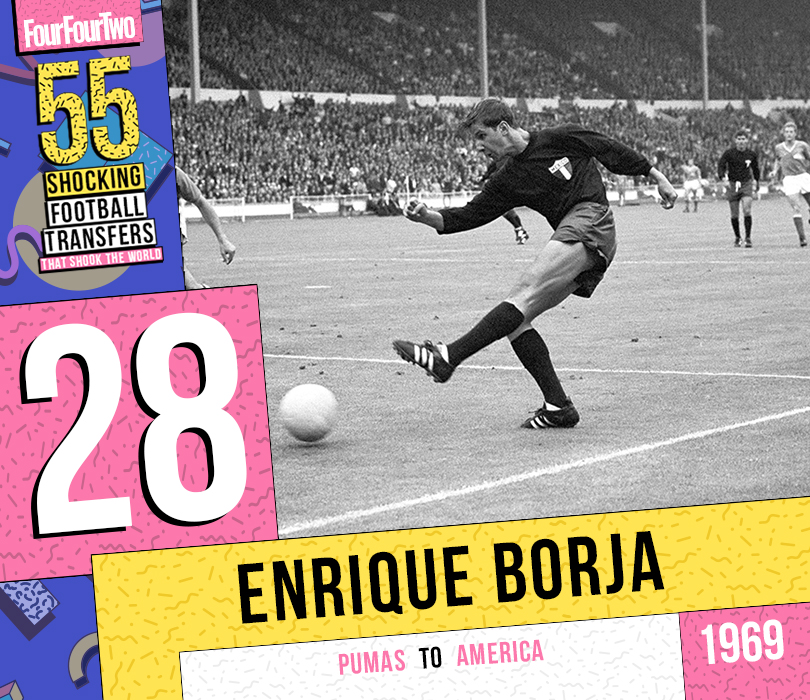
Fee: Undisclosed
Borja was 23 years old, had scored 69 goals for Puma, and wasn’t considering a move when he was told by the board that he’d been sold to his club’s biggest rivals America in 1969.
He was so annoyed at not being informed of the negotiations that he threatened to retire from football – and the conflict became so serious that even the Mexican president Guillermo Diáz Ordaz had to intervene (though conceded that he had no power to revoke the deal).
Ordaz promised to create a law which would allow footballers to profit from future transfers; Borja ended up moving to America and becoming a legend for his new club. Pumas’ loss.
Marcus Alves
27. Diego Maradona (Barcelona to Napoli, 1984)
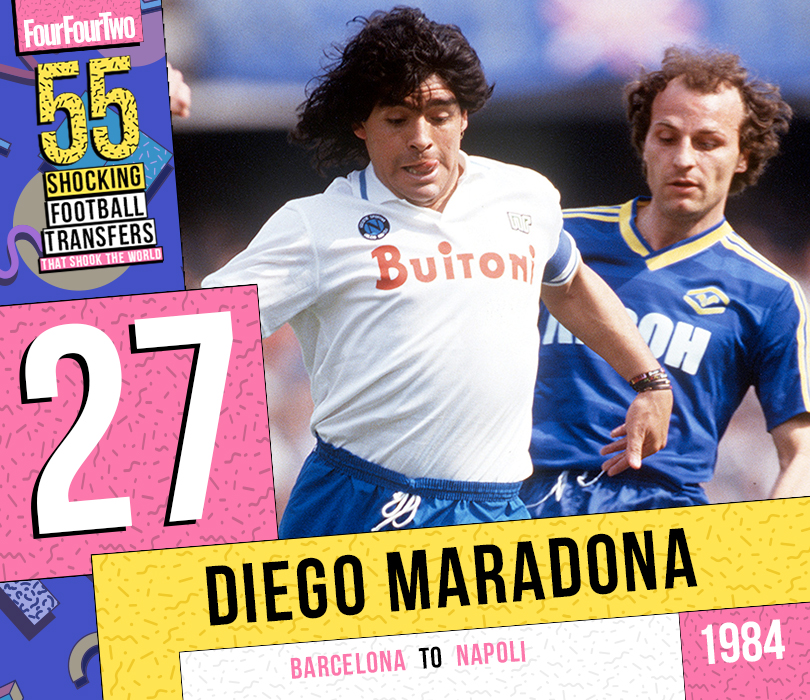
Fee: £8m
After partying, ill-discipline and injuries meant he became surplus to requirements at Barcelona, Diego Maradona’s move to Napoli in 1984 was the moment that gave birth to his legend.
Dazzling defences with his breathtaking skill, the Argentine star helped a club which had previously yo-yoed between Italy’s top two divisions win the only two titles in its history, thus breaking the duopoly of Juventus and Milan.
IN THE MAG Diego Maradona: How our celebration of the legend's bizarre life became an unintended eulogy
His confidence and tenacity mirrored that of his new city’s inhabitants, who related to the boy born in an Argentine shantytown and took to him as one of their own. It didn’t last, of course – Naples was also the city in which Maradona’s drug use escalated, he fathered an illegitimate child, and could never shrug off ties to the Camorra. Still, nobody at Napoli will ever wear that No.10 shirt again.
Adam Digby
26. Alex Teixeira (Shakhtar Donetsk to Jiangsu Suning)
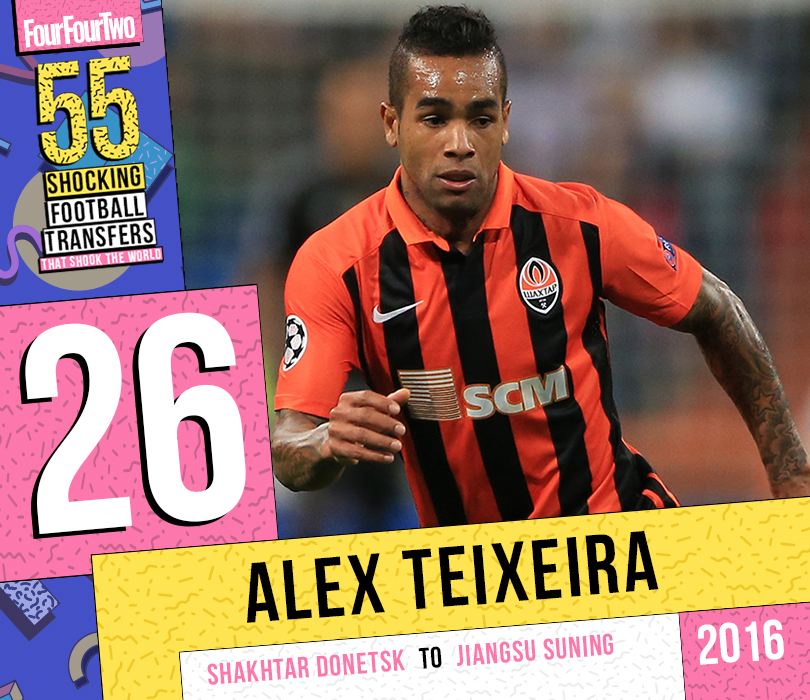
Fee: £42m
Never let it be said that Alex Teixeira is not an entrepreneurial fellow. Aged 19, the attacking prodigy left Vasco da Gama in his native Rio de Janeiro and headed for the somewhat frostier environs of Ukraine to join the billionaire-funded Shakhtar Donetsk (the club had a pleasingly large Brazilian contingent among its squad: 13 in total at one stage).
Seven years and five league titles later, the playmaker was being lined up by Liverpool, who were confident their much-deliberated £25m bid would tempt Shakhtar to sell. Yet within days, the player was on a plane to China, Jiangsu Suning’s €50m offer having blown Liverpool out of the water and broken the Chinese transfer record for the third time in a fortnight. Teixeira’s new boss would be Dan Petrescu, not Jurgen Klopp.
Was the move part of the first wave of a tectonic shift? Time will tell, but the 12 months since have done nothing to quell such ideas, and all signs point to Brazilians like Teixeira being on the frontline of any looming seismic changes.
Alex Hess
25. Gianluigi Lentini (Torino to Milan, 1992)
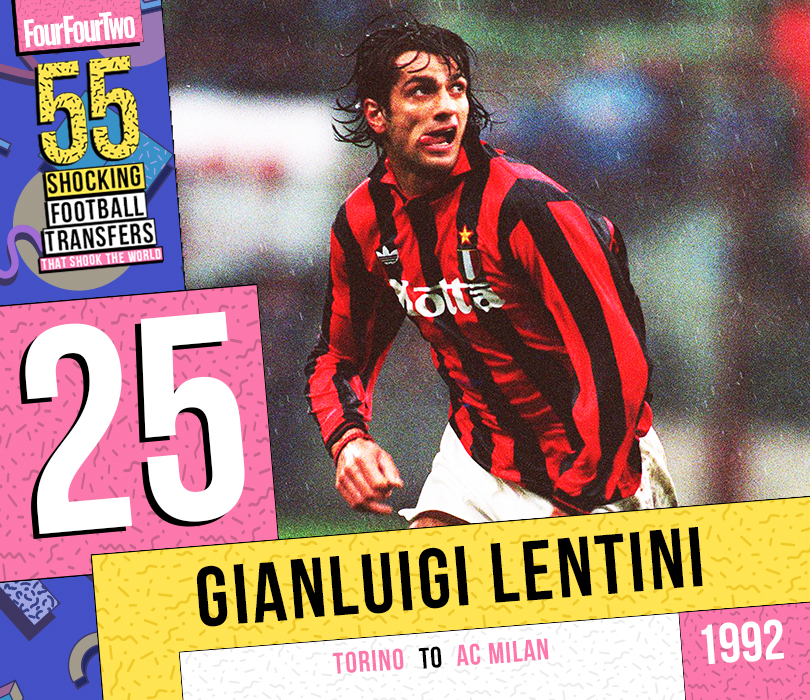
Fee: £9.2m
Having begun his career with Torino, Gianluigi Lentini quickly shot to prominence with the Granata as his dazzling wing play helped them reach the 1992 UEFA Cup Final.
Yet even as Silvio Berlusconi’s Milan routinely hoovered up the finest talent from across the continent, it was still a shock when they smashed the world transfer record by paying €13 million for Lentini in 1992.
MATT BARKER How Silvio Berlusconi's reign as AC Milan owner shaped modern football
A statement from the Vatican called the transfer fee “an offence to the dignity of work” but just a year later, a near-fatal 200km-per-hour car crash effectively ended the left-footed star’s career. Plagued by memory loss and blurred vision he was never the same, gradually slipping down through the leagues before finally retiring in 2012.
Adam Digby
24. Carlos Tevez (Boca Juniors to Shanghai Shenhua, 2017)

Fee: £71.6m
Tevez has never been afraid of making a controversial and costly club switch. The rampaging forward features three times in this list of shocking transfers, and it’s his most recent move to Shanghai that’s examined here.
Although the exact details are still to be confirmed it's been reported that the former Boca Juniors striker is now the highest-paid footballer in the world on an eye-watering £615,000 a week; the transfer fee said to be just shy of £72 million (!).
That would make Tevez’s latest move the sixth-most expensive of all time, and at 32 years of age too, following what was supposed to be a wind-down homecoming at first club Boca. Still time for one last headline-grabbing transfer?
Gregor MacGregor
23. Carlos Tevez (West Ham to Man City, 2009)
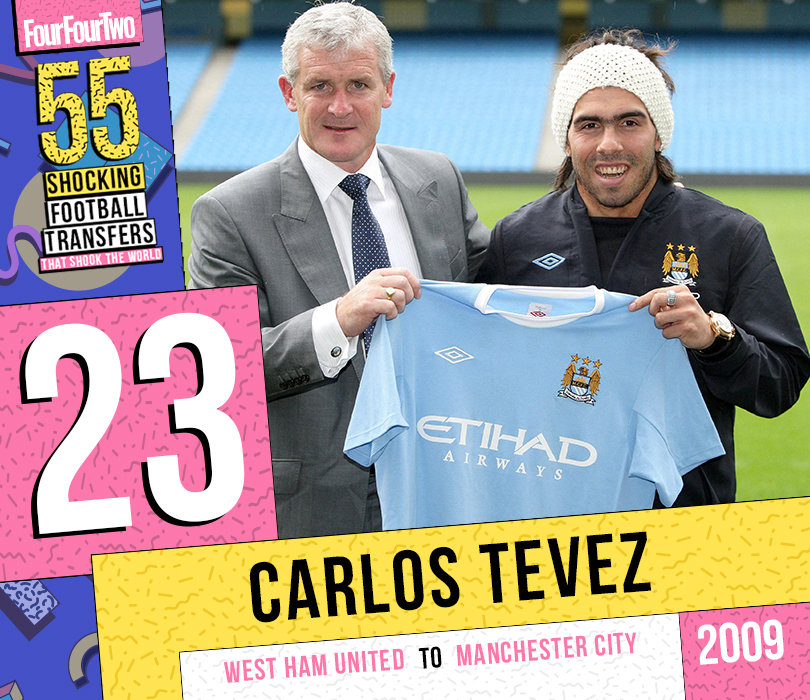
Fee: £25.5m
“Sometimes you have a noisy neighbour. You cannot do anything about that. They’ll always be noisy. You just have to get on with your life, put your television on and turn it up a bit louder.”
Sir Alex Ferguson was, of course, referring to Manchester City, who celebrated the signing of Tevez after a two-year loan spell at their cross-city rivals with a giant billboard featuring the Argentine’s face alongside the words: ‘Welcome to Manchester’.
It was a cheeky jibe, but Tevez was more than just a tool to wind up United: he averaged a goal every other game during his four seasons at the Etihad – and won the title at his old club’s expense in 2012.
Greg Lea
22. Pele (Unattached to New York Cosmos, 1975)
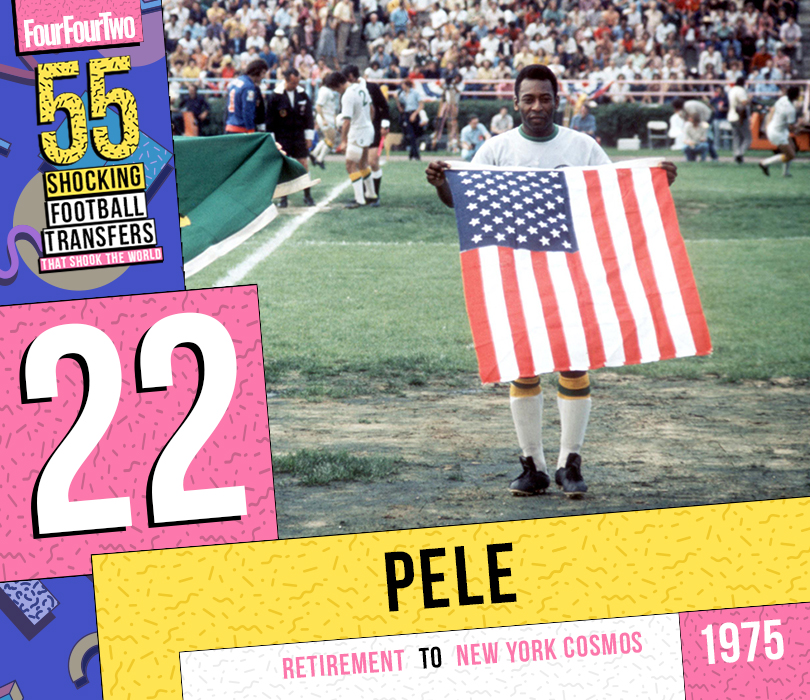
Fee: Free
“The North American Soccer League was practically dead. We decided there were two things that were needed to transform the whole issue. One was the World Cup, and the other was Pele. He was the only player anyone in this country had heard of.”
With ‘American soccer’ something of an oxymoron in 1975, those words from New York Cosmos president Clive Toye would have been enough to provoke laughter in a cathedral – yet five years of on-off persuasion and a $2.8m contract that made a 34-year-old Pele the world’s highest-paid athlete, helped realise the impossible.
PELE AT 80 The Brazilian’s life and career in pictures
It’s a story as much about the power of celebrity as anything else: within two years of Pele’s signing, Giorgio Chinaglia, Carlos Alberto and Franz Beckenbauer were among his team-mates in the city that never sleeps, and the world had been woken up to the American game by a proto-Galacticos project.
In a country indifferent to the sport, 10 million tuned in to watch Pele’s debut. The move paved the way for a footballing big bang which resulted in the 1994 World Cup, a competitive MLS, and steady integration of the sport into the American mainstream.
Alex Hess
21. David Beckham (Real Madrid to LA Galaxy, 2007)
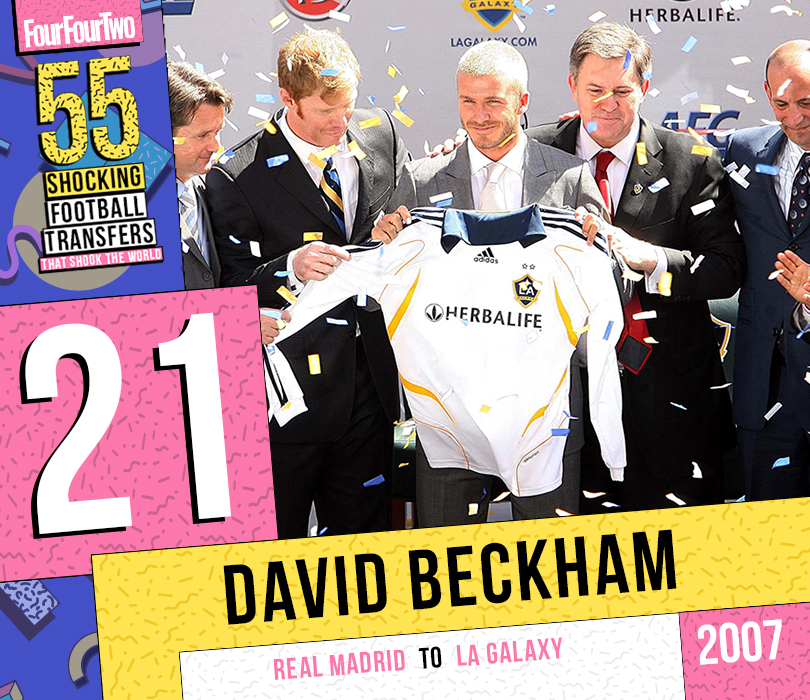
Fee: Free
MLS has since become a popular destination for fading European stars, but when Beckham announced he would be joining LA Galaxy in summer 2007 – long before crossing the Atlantic westward was commonplace for footballers – it came as a major shock.
Real Madrid manager Fabio Capello initially insisted he would never represent los Blancos again, before changing his mind and allowing Beckham to return to the fold a few weeks later.
The former Manchester United man made a total of 113 appearances during his five years as a Galaxy player – and also enjoyed separate loan spells with Milan during the US off-season – before finishing his career at PSG.
Greg Lea
20-11
20. Clive Allen (Arsenal to Crystal Palace, 1980)
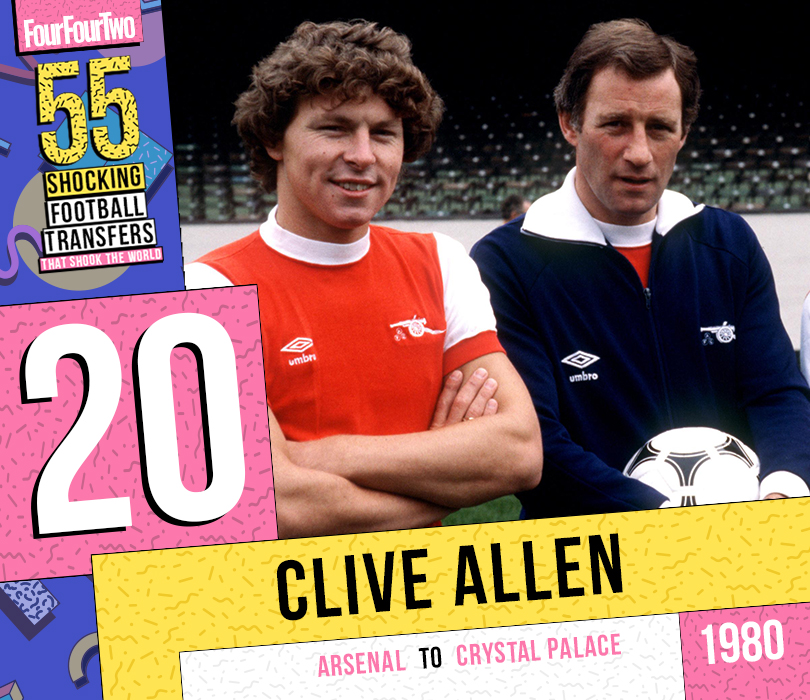
Fee: Swap deal
If breaking the bank to buy a teenage striker wasn’t very Arsenal, swapping him for a left-back two months later was even less believable. But it happened.
In summer 1980, barely a year after Trevor Francis broke the £1m barrier, the Gunners splurged £1.25m on Clive Allen, the 19-year-old who’d bagged 32 in 49 for QPR.
Three pre-season games later, he was bundled off to Crystal Palace (with reserve keeper Paul Barron) in exchange for Kenny Sansom. Sansom racked up nearly 400 Gunners games; Allen may be the only man to play for Arsenal, Tottenham, Chelsea, West Ham, Millwall, QPR and Palace.
Gary Parkinson
19. Fernando Torres (Liverpool to Chelsea, 2011)
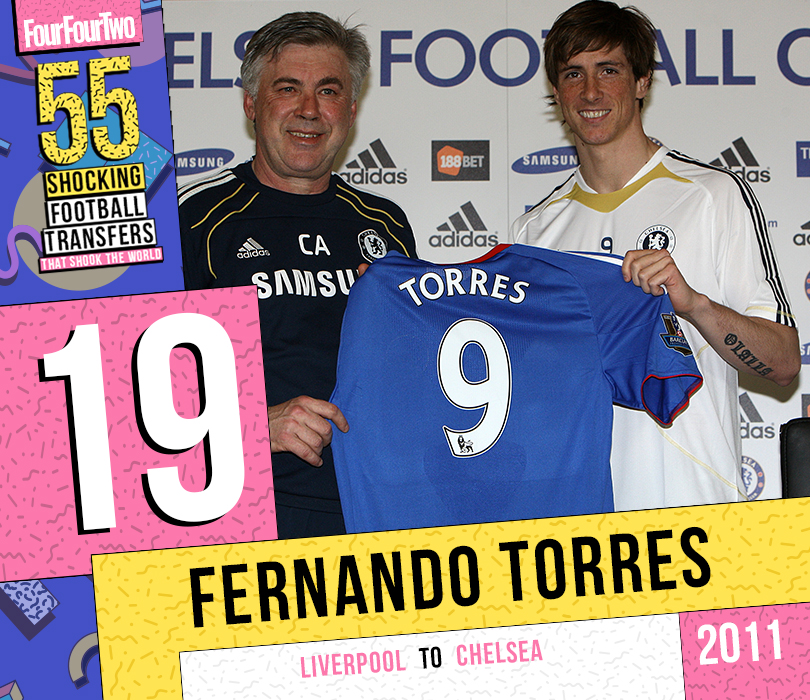
Fee: £50m
For Andriy Shevchenko in 2006, read Fernando Torres in 2011: for a while, Chelsea seemed to be the last club in the world to know when a player's legs were gone.
Had his Stamford Bridge malaise (20 goals in 110 league games) arrived unexpectedly, the British transfer record-breaking £50m that Roman Abramovich agreed to pay would have been easy enough to justify: Torres had been an outstanding forward and Liverpool considered Chelsea a rival. As it was, though, they paid through the nose in the hope that the six-month decline he was suffering through was a blip rather than the new normal.
It wasn't. Torres's Chelsea career was frequently excruciating to watch, and over the next seven seasons – spent between south-west London, Milan and back in Madrid – he would reach double figures just once in league competitions. SSB
18. Tommy Lawton (Chelsea to Notts County, 1947)
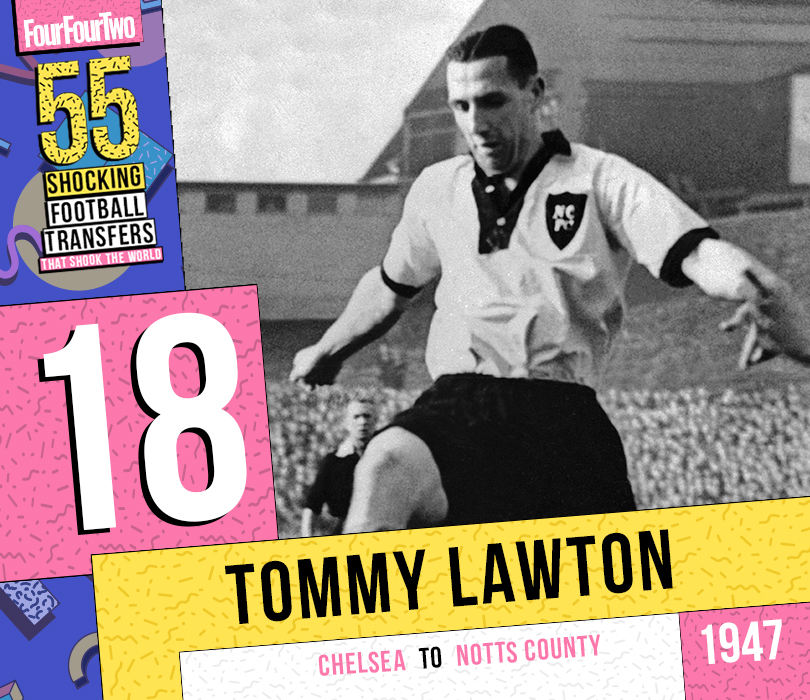
Fee: £20,000
It was Notts County manager Arthur Stollery, once physio at Stamford Bridge, who convinced England striker Tommy Lawton to leave First Division Chelsea and try his luck at County, two divisions below.
After learning that the player was unsettled in west London, a British record £20,000 outlay lured Lawton – still at the height of his powers – to Meadow Lane in 1947, and his arrival had crowds swelling to around 30,000 a game.
Doubters suggested that Lawton's spell there would be brief, but he stayed for five seasons, netting 103 goals in 166 appearances. During that time, he helped guide the team to Division Two thanks to his fearless displays up front for the Magpies.
Jon Spurling
17. Robin van Persie (Arsenal to Man United, 2012)

Fee: £24m
Beware, beware the expiring contract. "I always listen to the little boy inside of me in these situations – when you have to make the harder decisions in life. What does he want? That boy was screaming for Man United."
The bittersweet irony for Arsene Wenger was that Van Persie's best season for Arsenal occurred at a time when the club was least protected against his departure. Before 2011/12, the Dutch forward had never returned even 20 Premier League goals in a season – that year, however, he not only appeared in all 38 games and dispelled perceptions about his fragility, he also managed to score 30 times in the process.
ON THIS DAY Man Utd confirm offer for Arsenal captain Robin Van Persie
In July 2012, a year away from being a free agent, Van Persie announced that he wouldn't be extending his contract. Arsenal had been boxed into a corner and the club agreed to sell their talisman for an initial £22m, which rose when – like night following day – Manchester United won the Premier League with Van Persie's goals a year later.
Seb Stafford-Bloor
16. Alfredo Di Stefano (Millonarios to Real Madrid, 1953)
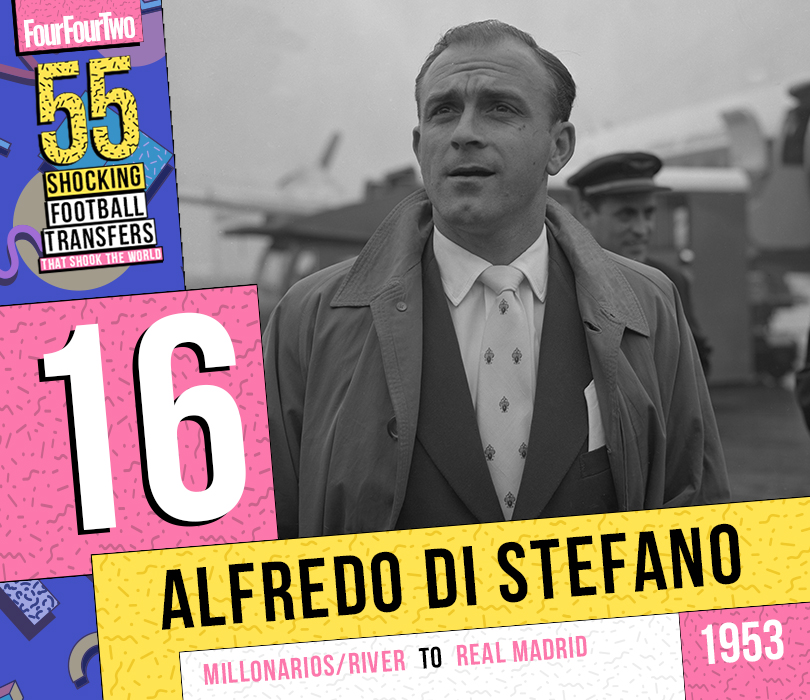
Fee: £195,000
There had always been niggle between Real Madrid and Barcelona – the Spanish Civil War and subsequent political executions from the Franco dictatorship saw to that – but the tug-of-war between La Liga’s big two for the Blond Arrow ensured on-field hostilities for years to come.
When Di Stefano left River Plate for Colombian side Millonarios in 1951 because of a players’ strike in Argentina, there was confusion as to which club the silky centre-forward actually belonged. Two years later, Barcelona agreed terms with River (who still owned his rights), while Madrid did a deal with Millonarios (for whom he played).
Cue much bickering, only settled when the Spanish FA said they had to share him one season at a time. Eventually, the Catalans announced (very loudly) that they couldn’t be bothered with the hassle. Di Stefano went on to win 15 major honours with los Blancos, including five European Cups.
Andy Murray
15. Allan Simonsen (Barcelona to Charlton, 1982)
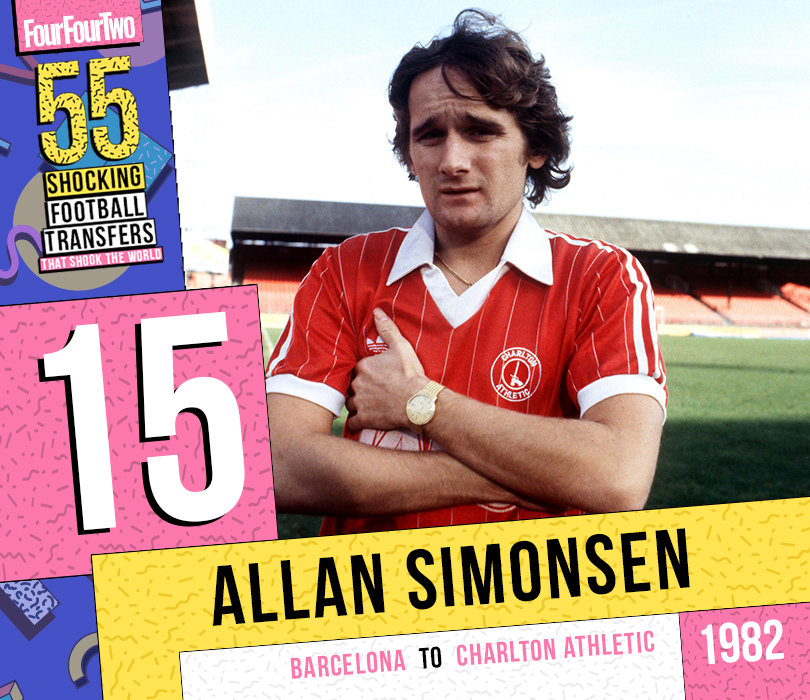
Fee: £324,000
Sidelined at Barcelona following the arrival of Diego Maradona in 1982, former European Footballer of the Year Simonsen decided that a move to struggling Second Division side Charlton Athletic would be just the ticket for a quiet life.
Outbidding Real Madrid, Addicks chairman Mark Hulyer offered a whopping £324,000 for the great Dane, reckoning that the Barça man's star quality would once again fill the crumbling Valley.
But the whole scheme was pie in the sky. Simonsen turned in some fine performances, but his colleagues were a cut below their illustrious new team-mate. Hulyer's foolhardy PR stunt failed, and Simonsen hot-footed it back to Denmark after five months, with Charlton mired in debt.
Jon Spurling
14. Trevor Francis (Birmingham to Nottingham Forest, 1979)
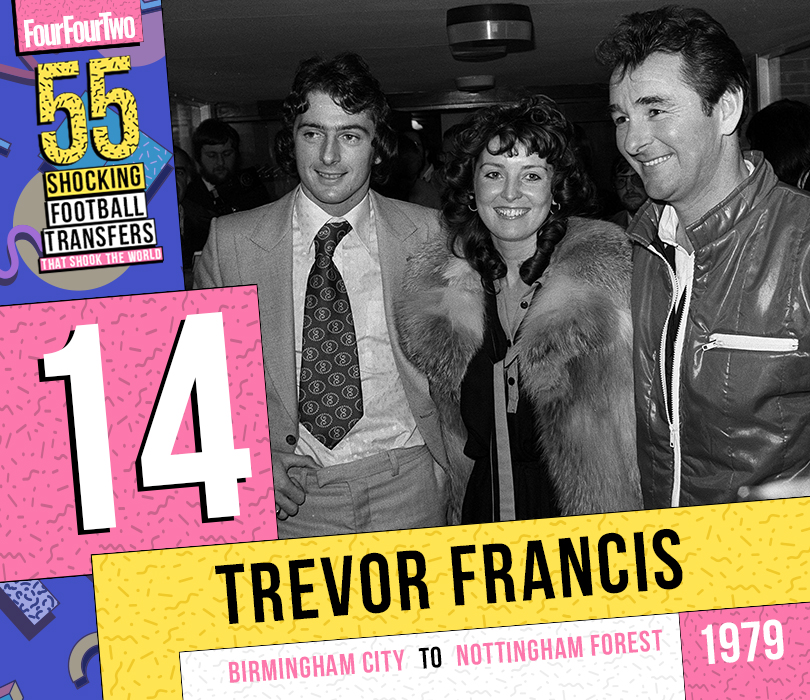
Fee: £1m
Although a typically bombastic Brian Clough claimed that Francis's transfer fee in February 1979 was actually £999,999 (he allegedly didn't want the tag of being Britain's first million pound footballer going to the former Birmingham forward's head), the gargantuan fee – which triggered a glut of largely unsuccessful £1m transfers – sent shockwaves around football.
SEB STAFFORD-BLOOR Would Brian Clough have been a good England manager?
At the end of his first season, Francis duly scored the winner against Malmo in the European Cup final, but not before Clough insisted that he make the half-time tea for his new team-mates in order to ensure that his player’s pricey feet remained firmly on the ground.
Jon Spurling
13. Robinho (Real Madrid to Man City, 2008)
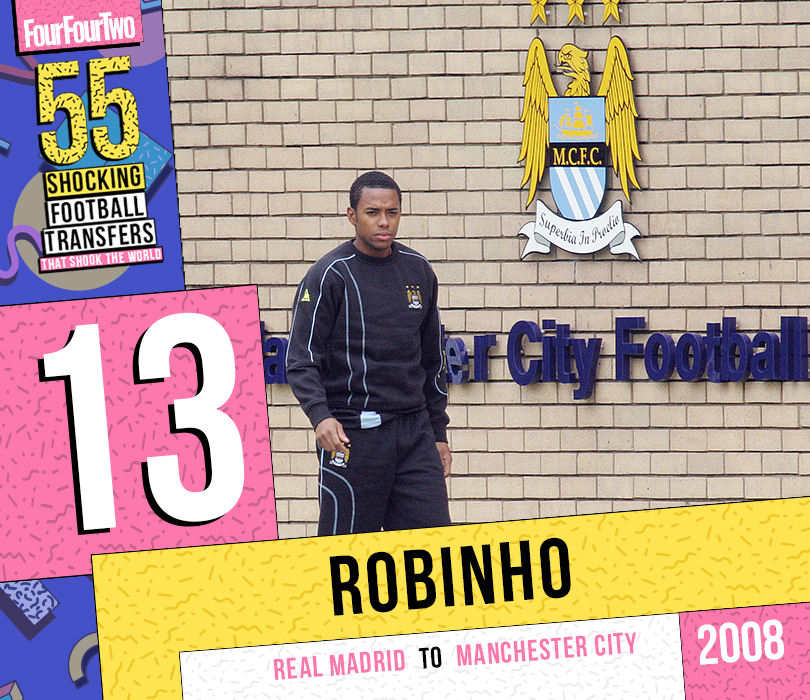
Fee: £32.5m
In the twilight hours of September 1, 2008, a lottery winner bounded down Bond Street. Finding most of the shops already shut, he crashed through the doors of the only low-grade boutique still open and spilt his bulging wallet over the counter.
Manchester City had to have someone. By the time the Abu Dhabi Group had settled on Robinho, David Villa and Kaka had already rebuffed them with a quizzical Que? Nevertheless, at the 11th hour a giggling Real Madrid accepted a £32.5m bid for their out-of-favour Brazilian and, in the morning, the rest of the world was spitting out its coffee.
INTERVIEW Robinho – "I had a fight with Craig Bellamy once, but then who at City didn’t?!"
The deal is generally assessed as a failure. That's not unreasonable: Robinho was incontestably disappointing after all, but it did put the rest of England on notice – from being clumsy billionaires, City would rise to become one of the most feared transfer vultures in world football.
Seb Stafford-Bloor
12. Andy Cole (Newcastle to Man United, 1995)
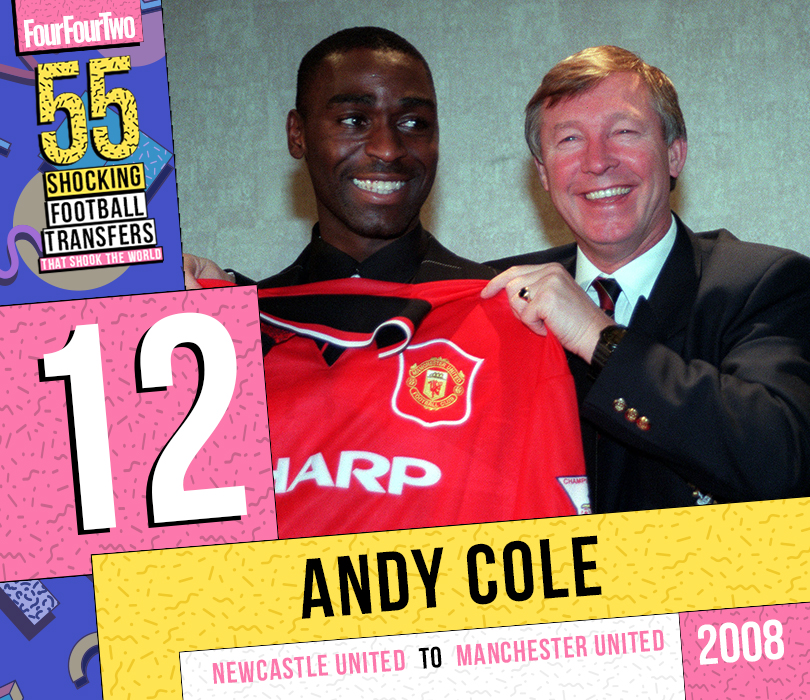
Fee: £7m
Kevin Keegan once said he’d “put the phone down on Fergie if he ever called about Andy”. But some simmering tensions between player and manager in the winter of 1994 – Keegan didn’t think Cole was taking training seriously – had convinced the Newcastle boss he had a problem that even a remarkable goalscoring record (34 in 40 in his first top-flight season) couldn’t mitigate.
A £7m fee did little to soften the blow among Newcastle fans and, hard as it is to imagine today, the sale resulted in Keegan taking to the steps outside St James’ Park to provide a face-to-face explanation for a small army of mutinous fans.
Astonishingly, Cole elected not to play in his first match against his old club, for no other reason than sheer goodwill. "Emotion is running high on Tyneside and my playing would just add fuel to the fire,” he said. The eight trophies he went on to win at United gave him a tangible kind of victory to go alongside his moral one.
Alex Hess
11. Ricky Villa and Ossie Ardiles (Racing Club/Huracan to Tottenham, 1978)
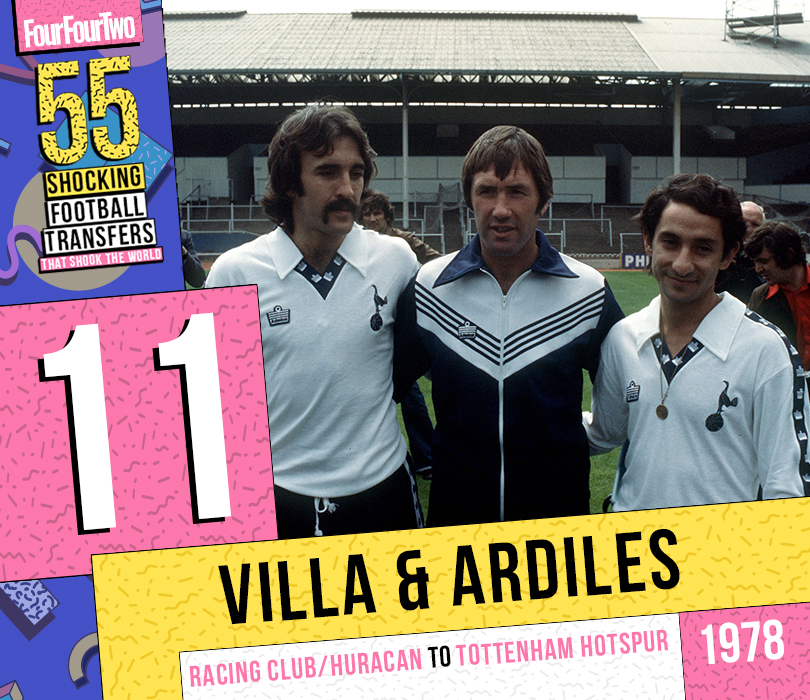
Fees: Undisclosed
In 1978, the Sheffield United manager Harry Haslam travelled to the World Cup in Argentina for a better look at a 17-year-old called Diego Maradona who, rumour had it, was half-decent.
On something of a whim, his good friend – the Tottenham manager Keith Burkinshaw – decided to come along for the ride. Maradona never did end up at Bramall Lane, but his Argentina team-mate Ossie Ardiles caught Burkinshaw’s eye. Once he and his pals had wrapped up a victorious World Cup campaign, Ardiles wasted little time in signing on for the club he called 'Tottingham'.
“After it was all signed, Ossie said to me ‘my friend, he’s also available’,” Burkinshaw recalled. And so it came that, in an age when England’s football clubs were far more likely to do their shopping in Bognor Regis than Buenos Aires, a pair of World Cup winners showed up in north London to line up alongside the likes of Gerry Armstrong and Steve Perryman.
Both earned themselves club legend status: Ardiles stayed for a decade (and returned as manager in 1993), while Villa scored what might just be the most famous FA Cup final goal of all-time in 1981. All in all, a trip worth taking for Burkinshaw.
Alex Hess
10-1
10. John Obi Mikel (Lyn Oslo/Man United to Chelsea, 2006)
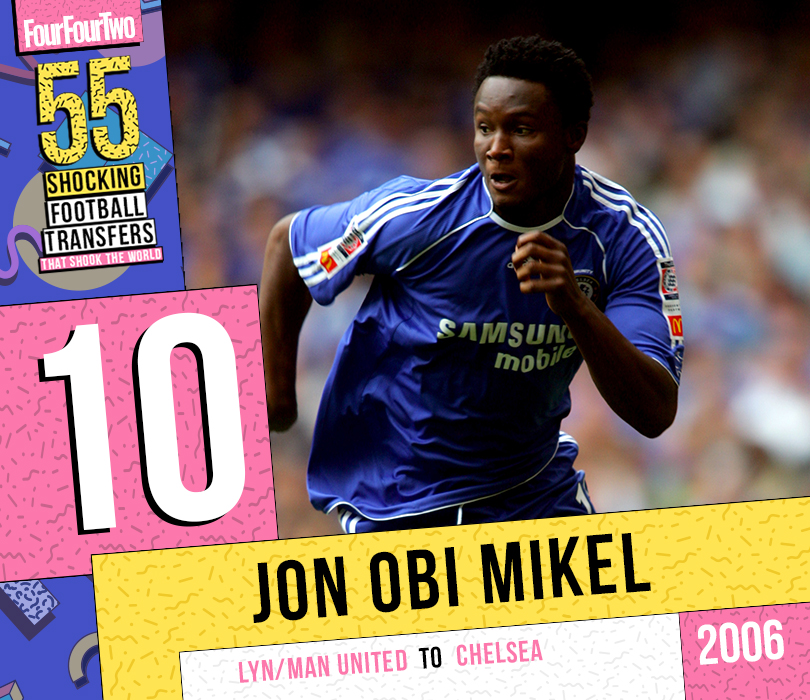
Fee: £16m
Even now, nobody seems quite certain as to what happened between Manchester United, Chelsea and Norwegian side Lyn. In 2005, United claimed an agreement had been reached with player and club, and even released pictures of him holding their shirt.
Chelsea were furious, insisting that they had a prior agreement to sign Mikel, evidenced by the financial assistance they'd given during his education in Norway. To further complicate matters, it would later transpire that the Nigerian's original registration with Lyn had allegedly been forged by a club director.
It remains a rabbit hole of a transfer involving opaque agenting practices, misinformation, and – seemingly – a healthy dose of fraud. Whatever the truth, the Norwegian Football Federation's intervention led to Chelsea paying a split fee of £16m to Manchester United (£12m) and Lyn (£4m) for a player who would win every domestic and continental trophy available to him over the next decade.
Seb Stafford-Bloor
9. Carlos Tevez and Javier Mascherano (Corinthians to West Ham, 2006)
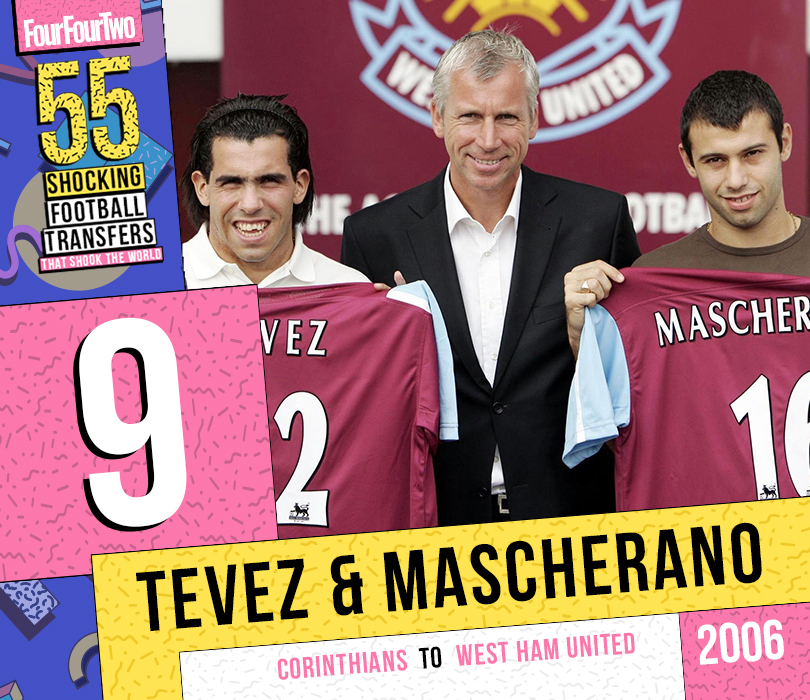
Fee: Undisclosed
The most entertaining aspect of this deal is unquestionably that, with West Ham in deep relegation trouble, Alan Pardew generally opted to play Marlon Harewood and Hayden Mullins instead of Carlos Tevez and Javier Mascherano.
Arriving in August 2006, both players had left Upton Park by the summer of 2007: Mascherano after an initial January loan to Liverpool, Tevez following a blistering New Year resurgence that would keep West Ham – by then managed by Alan Curbishley – in the division.
ON THIS DAY Blades and West Ham agree settlement over Carlos Tevez saga
The controversy bubbles to this day: both players' rights were owned by Media Sports Investments (MSI) rather than Corinthians, and West Ham were not only fined by the Premier League for breaching the rules governing registration but also forced to arrive at a settlement with relegated Sheffield United, who – according to Neil Warnock – went down as a direct consequence of Tevez's form.
Crucially, the Hammers were allowed to keep their place in the division, though, and the demoted United have yet to even threaten a return.
Seb Stafford-Bloor
8. Eric Cantona (Leeds to Man United, 1992)
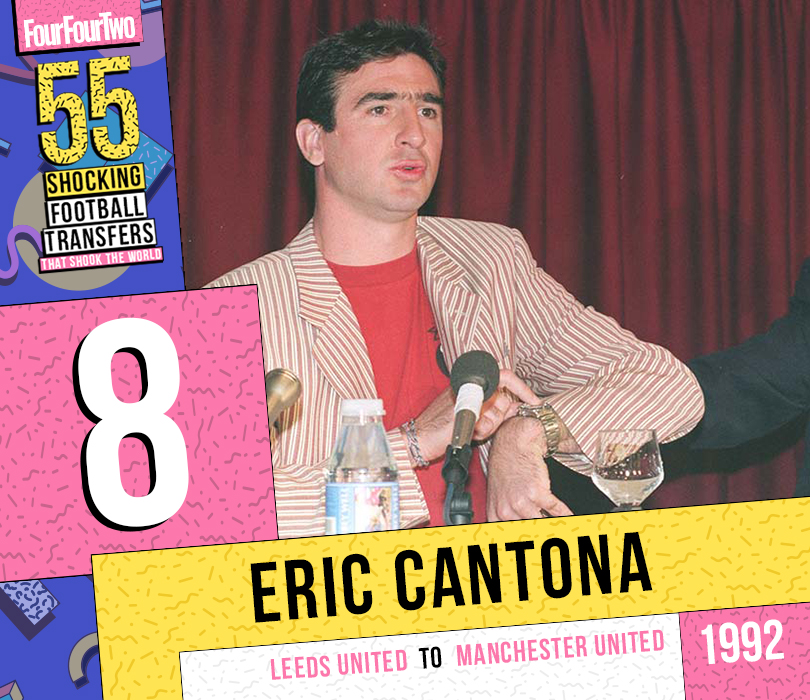
Fee: £1.2m
Legend has it that it was a spur-of-the-moment thought. Alex Ferguson, who happened to be in the room when his bosses at United got a phone call from Leeds to inquire about the availability of Denis Irwin, thought it might be worth asking the same about Eric Cantona. The Frenchman, whose fiery temperament worried the Leeds hierarchy, needed little persuasion to switch, the laughable fee of £1.2m arguably representing football’s most glorious bargain.
In just half a decade at United, Cantona made a strong case for being the club’s greatest-ever player, his grit, flair and charisma doing much to forge the aura on which the Ferguson era was founded, and his unrelenting dedication to training proving instructive to a certain group of up-and-comers.
His form at the tail end of the 1995/96 season remains one of the most remarkable sustained individual feats of the modern age. That he retired without warning aged just 31 has only added to his legend.
Alex Hess
7. Luther Blissett (Watford to Milan, 1983)
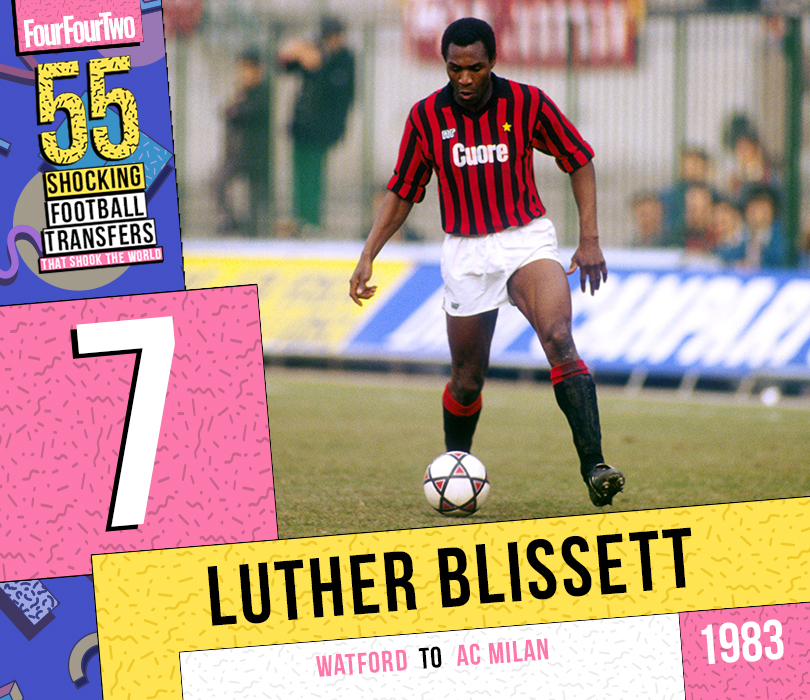
Fee: £1m
“I was stunned that someone was prepared to pay that much for a footballer,” Blissett would later tell FFT of his move to Italy the year after he top-scored the First Division with 27 goals for plucky Watford.
Just one season later, though, Blissett was back at Vicarage Road for half the cost after a season of struggle at San Siro. It’s worth remembering, though, that this was an altogether different Milan team that had only just returned to Serie A after a stint in the second tier, and Blissett struggled with a new style in foreign climes.
Subsequently, he mustered only five goals in his 30 Serie A games and was happy for a return home. “It was hugely frustrating. I had no real passion for winning matches with dull, defensive football,” Blissett admitted. “The move really re-enforced that the Italians truly are the masters of defence. I would love to have gone back four years later when their game had evolved into a more attacking one.”
Joe Brewin
6. Jean-Marc Bosman (RFC Liège to Unattached, 1990)
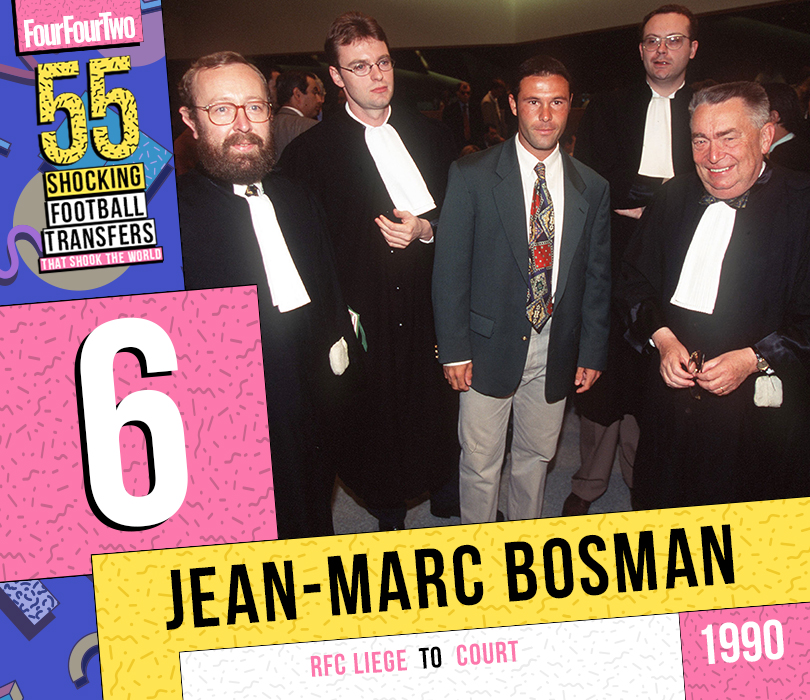
A landmark moment in modern football owes everything to an otherwise inconsequential player. Jean-Marc Bosman was playing for RFC Liège when he decided to take his employers to court over his employment rights in the summer of 1990. Dunkerque had wanted to sign him but wouldn’t meet Liège’s asking price, resulting in his club slashing his wages by a whopping 75%.
Five years and one arduous court case later, Bosman was ruled free to move at the end of his contract without money needing to change hands between parties. The age of player power had dawned.
BOSMAN "Ronaldo and Messi win what they win because of me"
The Bosman Ruling – a term that quickly became a staple of the footballing lexicon – meant that any player allowing their contracts to run down was implicitly threatening their club, and were often hurriedly offered a fat new contract to deter a move.
Depending on your point of view, it either turned football into a zero-loyalty game populated by self-interested brats, or one of the few industries where real power lies in the hands of the labourer. Take your pick.
Alex Hess
5. Kevin Keegan (Hamburg to Southampton, 1980)
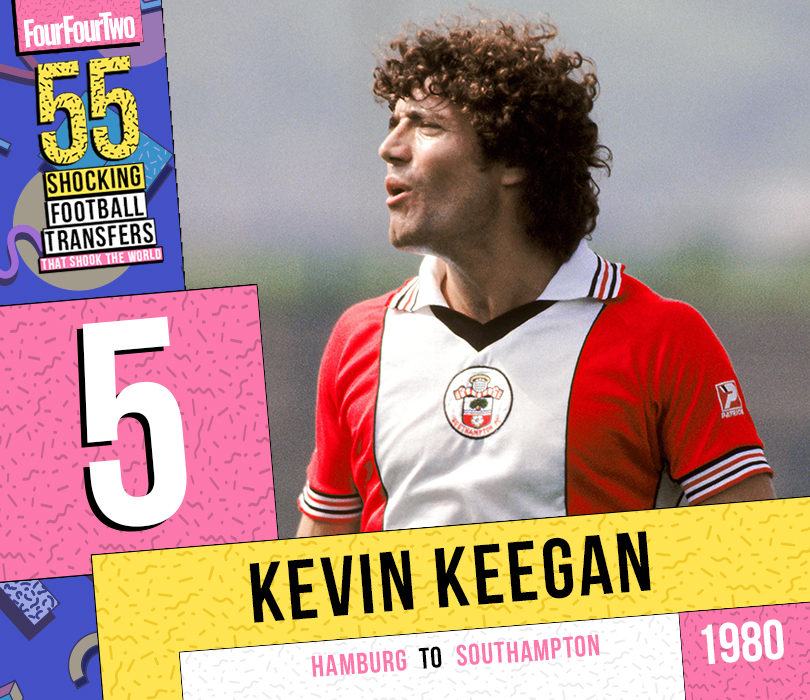
Fee: £420,000
Time and management may have diminished the magnitude of Kevin Keegan as a player. By 1980 he was a Ballon d’Or-winning England captain, pop star, TV regular, brand ambassador, This Is Your Life subject, and one of very few Englishmen playing abroad.
If he were to return, it would surely be to a huge team… but Liverpool didn’t want to activate their buyback clause and Lawrie McMenemy stunned football by wrangling him to unfashionable Southampton for £420,000.
Bagging 37 in 68 games, Keegan led a flamboyant Dad’s Army of ageing stars who topped the league by January 1982, but fell away. That summer Keggy would take his goals to Newcastle.
Gary Parkinson
4. Roberto Baggio (Fiorentina to Juventus, 1990)
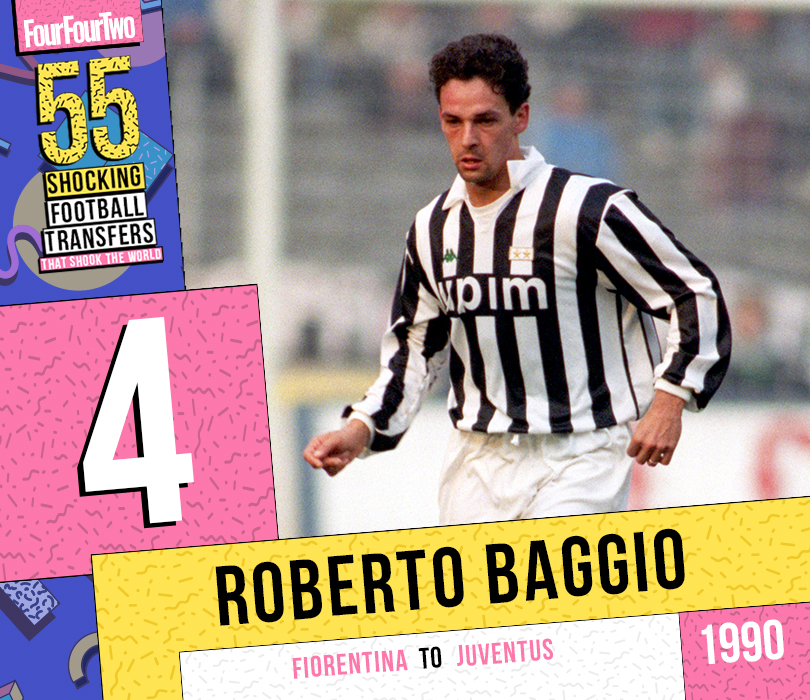
Fee: £8m
"If you can’t beat ‘em, join ‘em" goes the old adage, and Roberto Baggio would do just that after failing to help Fiorentina beat Juventus in the 1990 UEFA Cup Final.
The Viola had spent two years helping him overcome a serious knee injury, only for Baggio to join their bitter rivals just weeks after they had beaten them to yet another trophy.
Tension between the two clubs had always been high, but not even a world record sum of £8 million could appease Tuscan supporters, who spent the days following the announcement rioting in the renaissance city.
Baggio went on to Scudetto and Ballon d’Or glory with Juventus, but never gave the Old Lady his full affection, refusing to take a penalty and pulling on a Fiorentina scarf when he was substituted during his first game back at the Stadio Artemio Franchi.
Adam Digby
3. Mo Johnston (Nantes to Rangers, 1989)
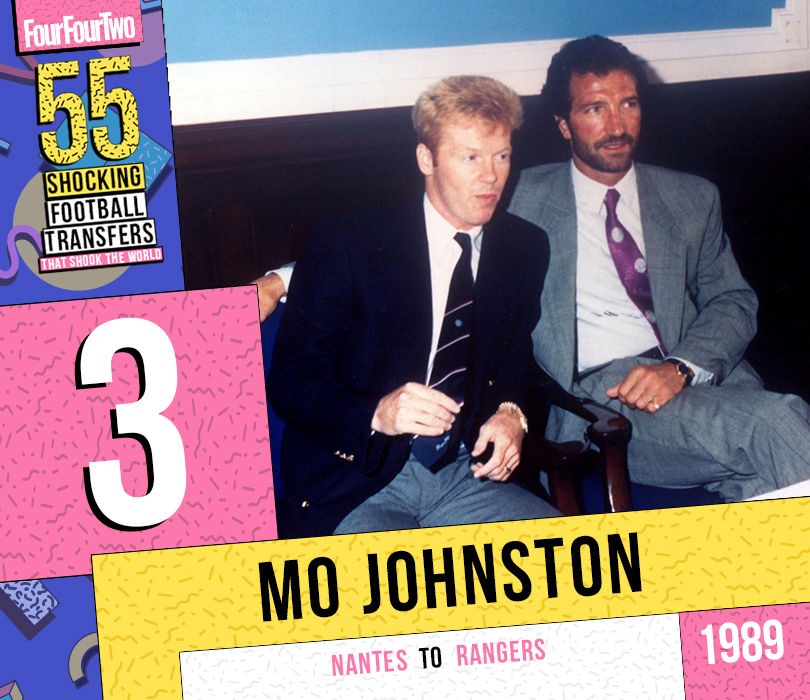
Fee: £1.9m
Strictly speaking, ‘MoJo’ wasn't the first Catholic to sign for Rangers, but when the diehard Celtic fan – who'd also become a goalscoring hero at Parkhead in the mid-’80s – put pen to paper for Graeme Souness's side in July 1989, all hell broke out in sectarian Glasgow.
Loyal Protestants vowed never to return to Ibrox, and staunch Catholics burnt effigies of Mo for promising to re-sign for them (from Nantes) before spurning his old club at the 11th hour for their deadly rivals.
Slowly, the fuss and furore died down, and Mo did what he did best – scored goals for his new club, who won the title in his only two seasons there before a £1.5m move to Everton in 1991.
Jon Spurling
2. Sol Campbell (Tottenham to Arsenal, 2001)
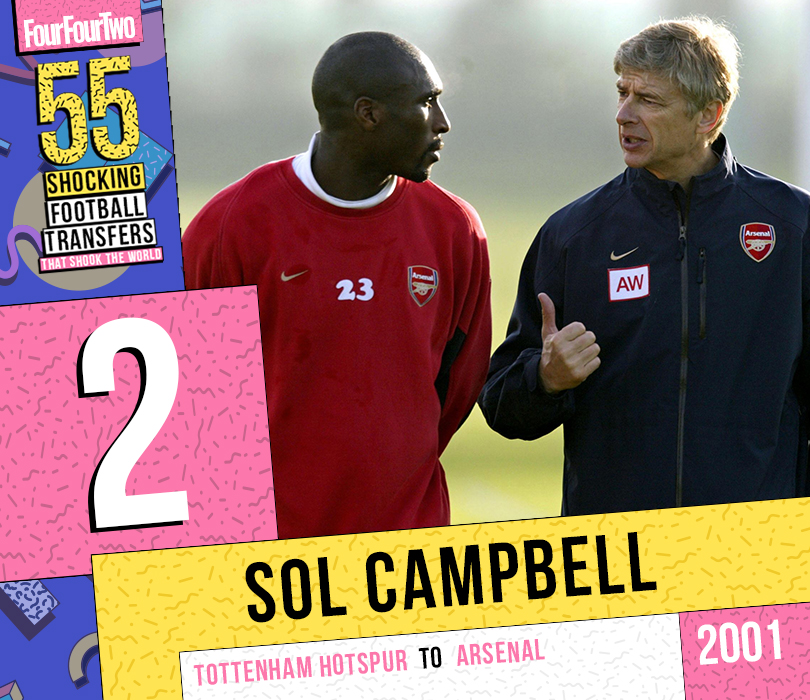
Fee: Free
In 2001, upon the expiration of his Tottenham contract, the club's then-captain became the first player since Pat Jennings to move from White Hart Lane to Highbury.
To hear Sol Campbell tell this story is strange indeed. He wanted to win trophies, he didn't feel Tottenham were able to match his ambition, but believed that Arsenal ultimately would. Simple – and yet to this day he seems baffled by the fuss it caused. Note, in particular, the surprise he expresses in interviews at the hostility he would often face during north London derbies.
MARK WHITE Was Sol Campbell's move to Arsenal the greatest Premier League transfer ever?
He should never have been subjected to any chanting with racial or homophobic tones – that is inarguably true and a stain that the Spurs' fanbase has to wear – but his blanket rejection of criticism has always been a contrary response to one of the most treacherous actions witnessed in modern football.
Seb Stafford-Bloor
1. Luis Figo (Barcelona to Real Madrid, 2000)
Fee: £36.2m
“As a player at Barcelona, he never hid from anything,” commented one of Figo’s team-mates after his massively controversial £36.2 million move to rivals Real Madrid in 2000.
Brave or not, even the Ballon d’Or winner was shocked at the level of vitriol directed at him when he returned to the Camp Nou with his new club in October 2001 – whenever he touched the ball, a hail of oranges, cigarette lighters and bottles (the pig’s head was thrown a year later) rained onto the pitch.
Wisely, he avoided taking corners that day, instead spending his time admiring the “Judas” and “Scum” banners dotted around the stadium in his honour.
Figo’s arrival ushered in a new era of Galacticos at Real Madrid; Zinedine Zidane, Ronaldo and David Beckham all followed in the next three seasons to help make up football’s most iconic array of stars.
Jon Spurling
Subscribe to FourFourTwo today and get a FREE England Euro 96 shirt!
READ NEXT
OLYMPIC FOOTBALL What would a men's Team GB football side look like?
TOKYO 2020 Team GB Olympics 2020 football squad: full women's team
TEAM GB All the fixtures for Team GB's women's football team
FourFourTwo was launched in 1994 on the back of a World Cup that England hadn’t even qualified for. It was an act of madness… but it somehow worked out. Our mission is to offer our intelligent, international audience access to the game’s biggest names, insightful analysis... and a bit of a giggle. We unashamedly love this game and we hope that our coverage reflects that.
